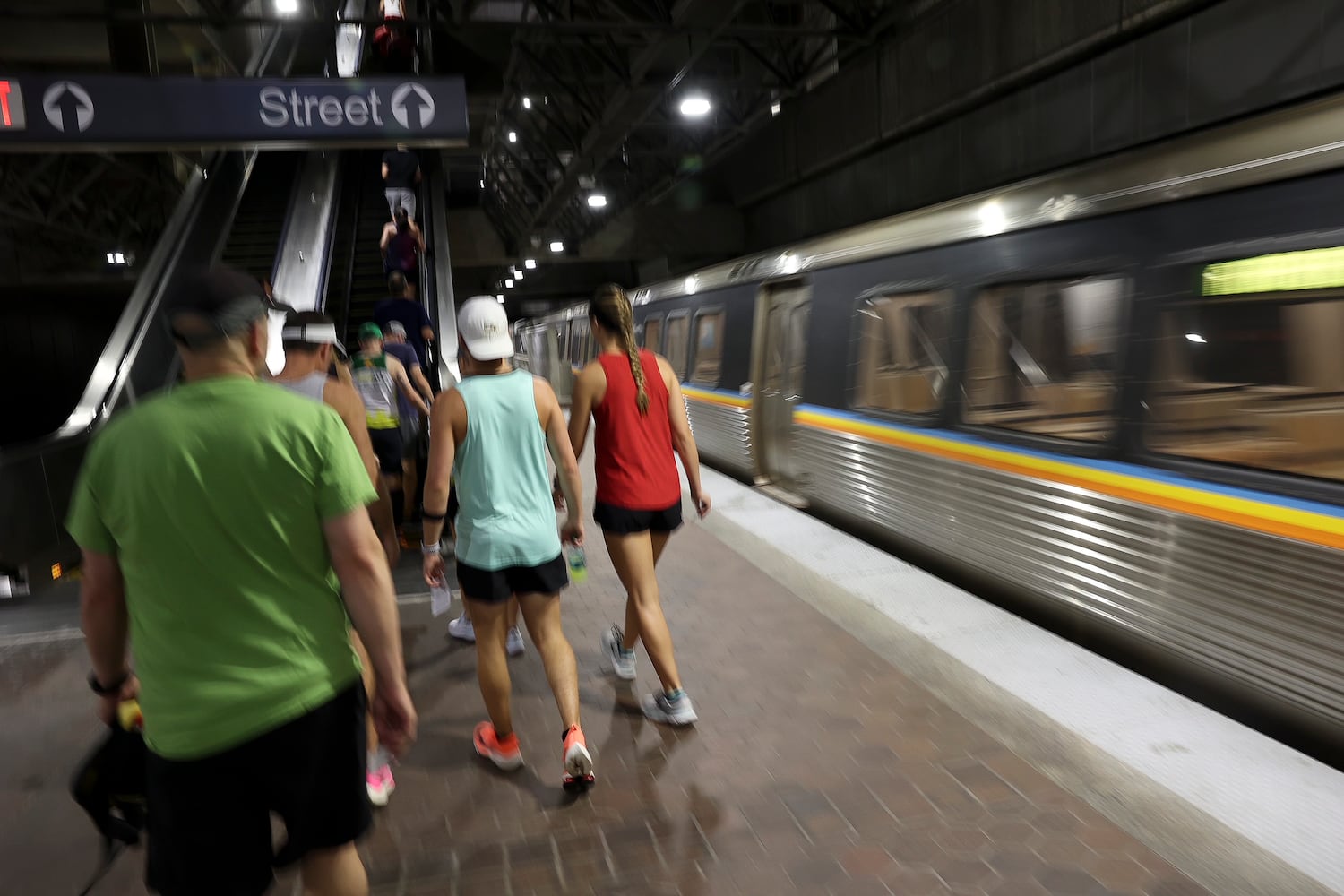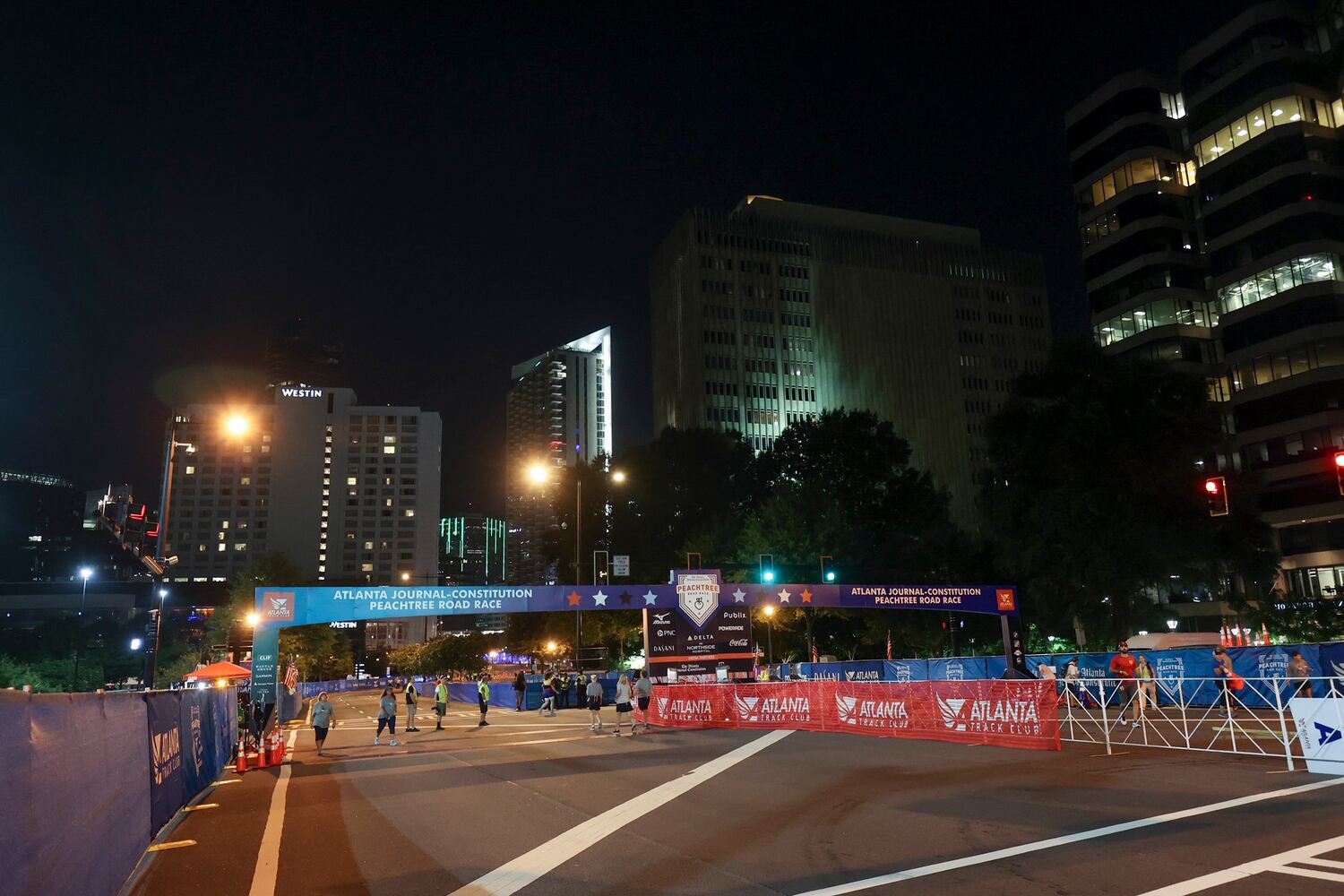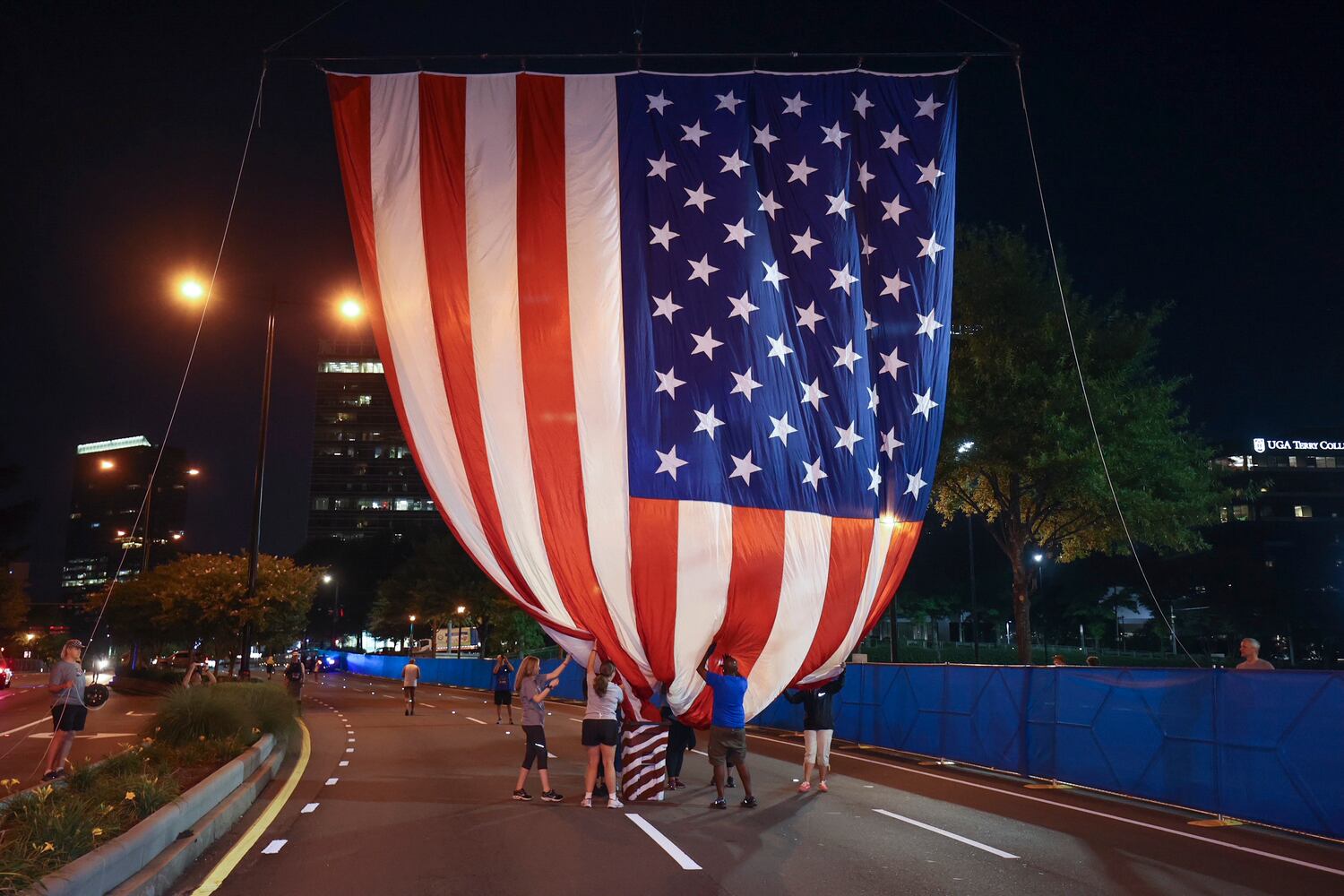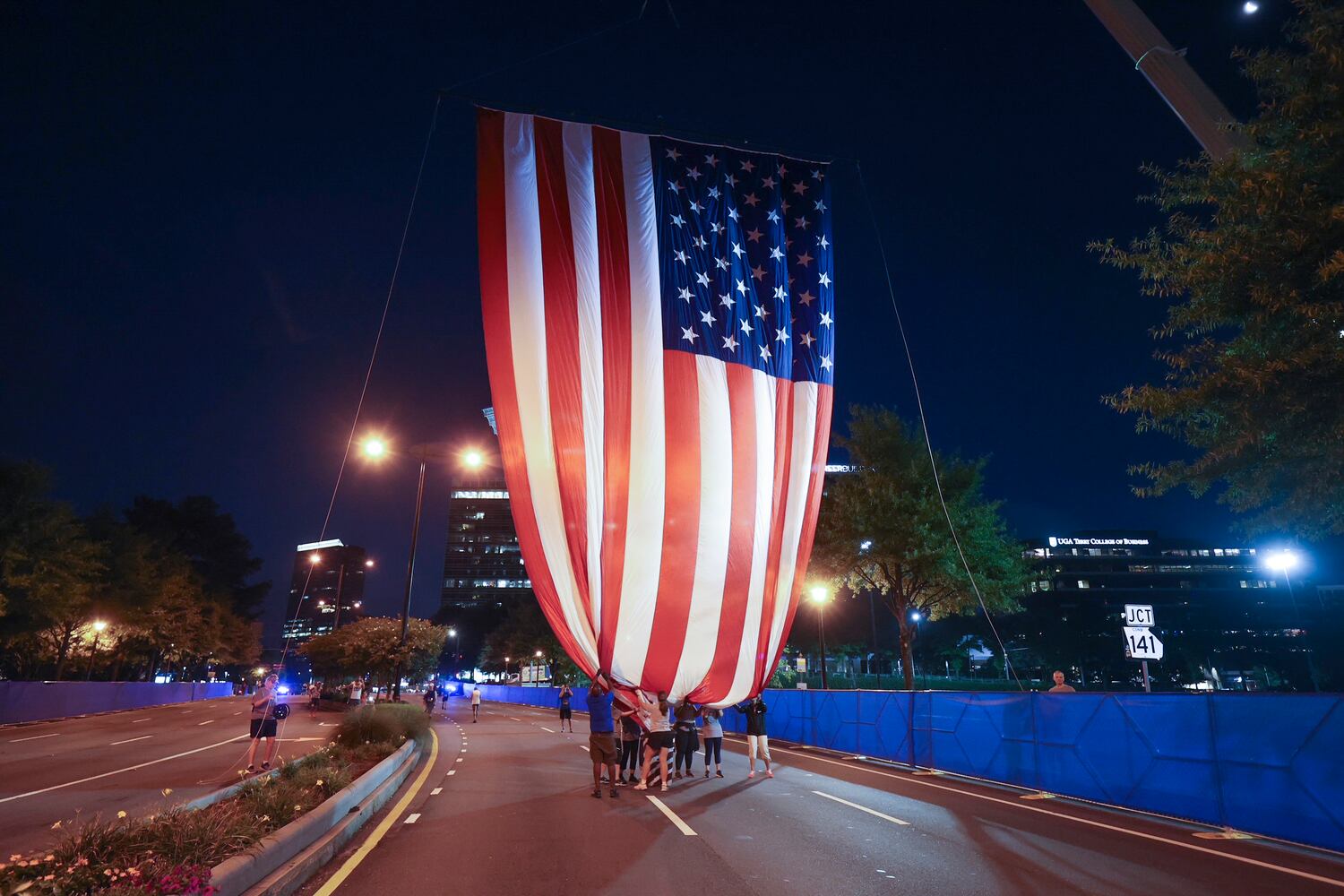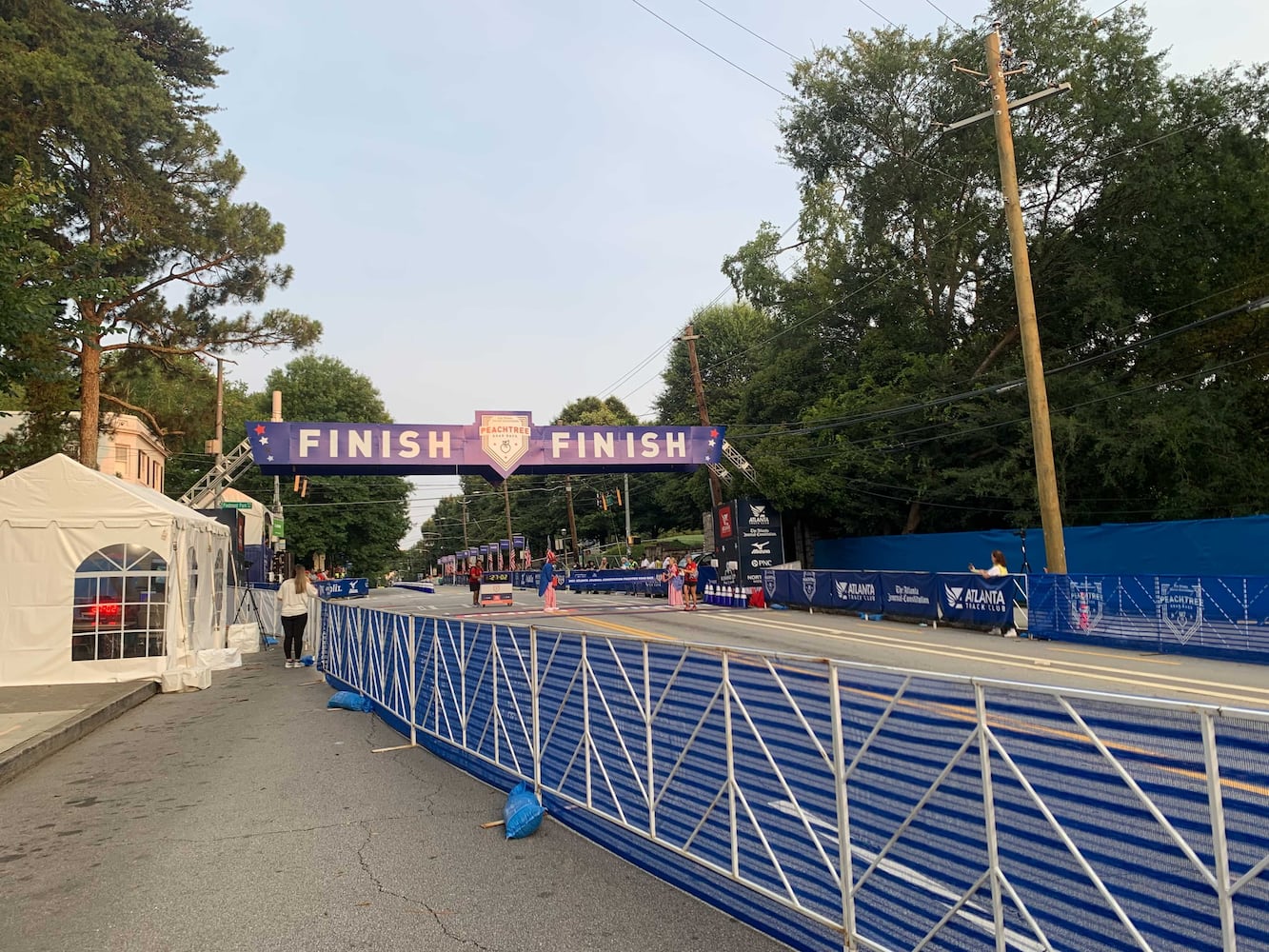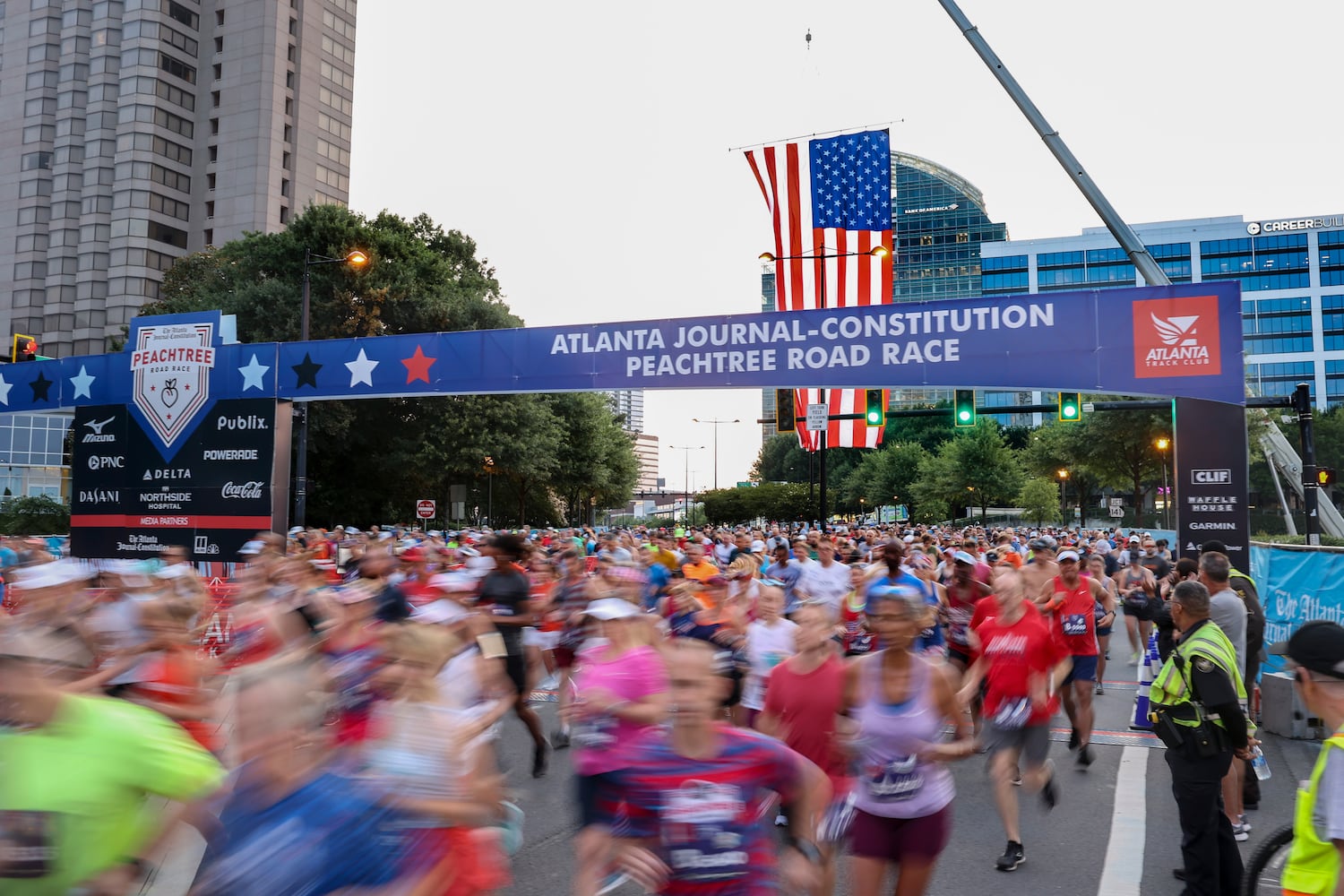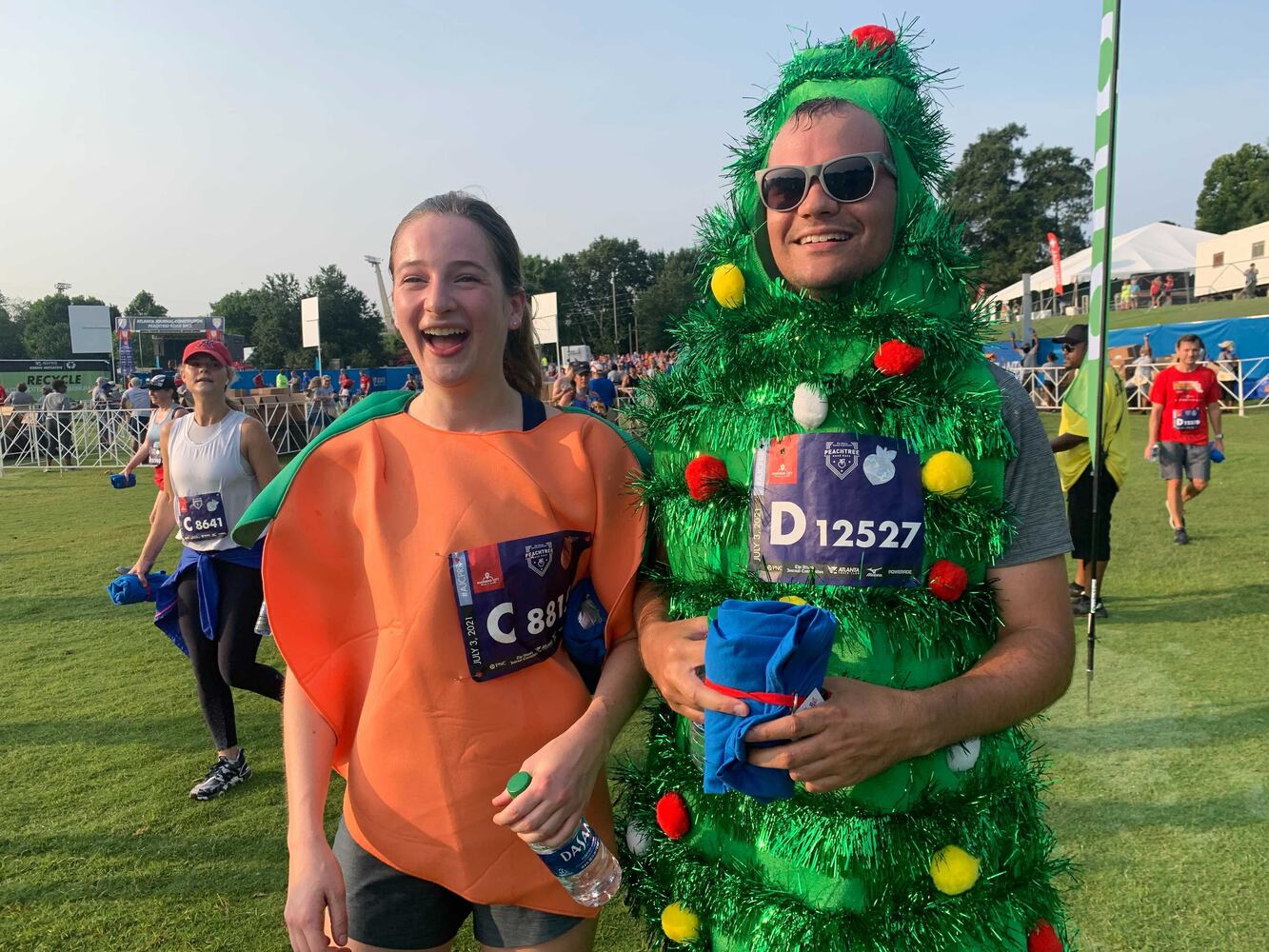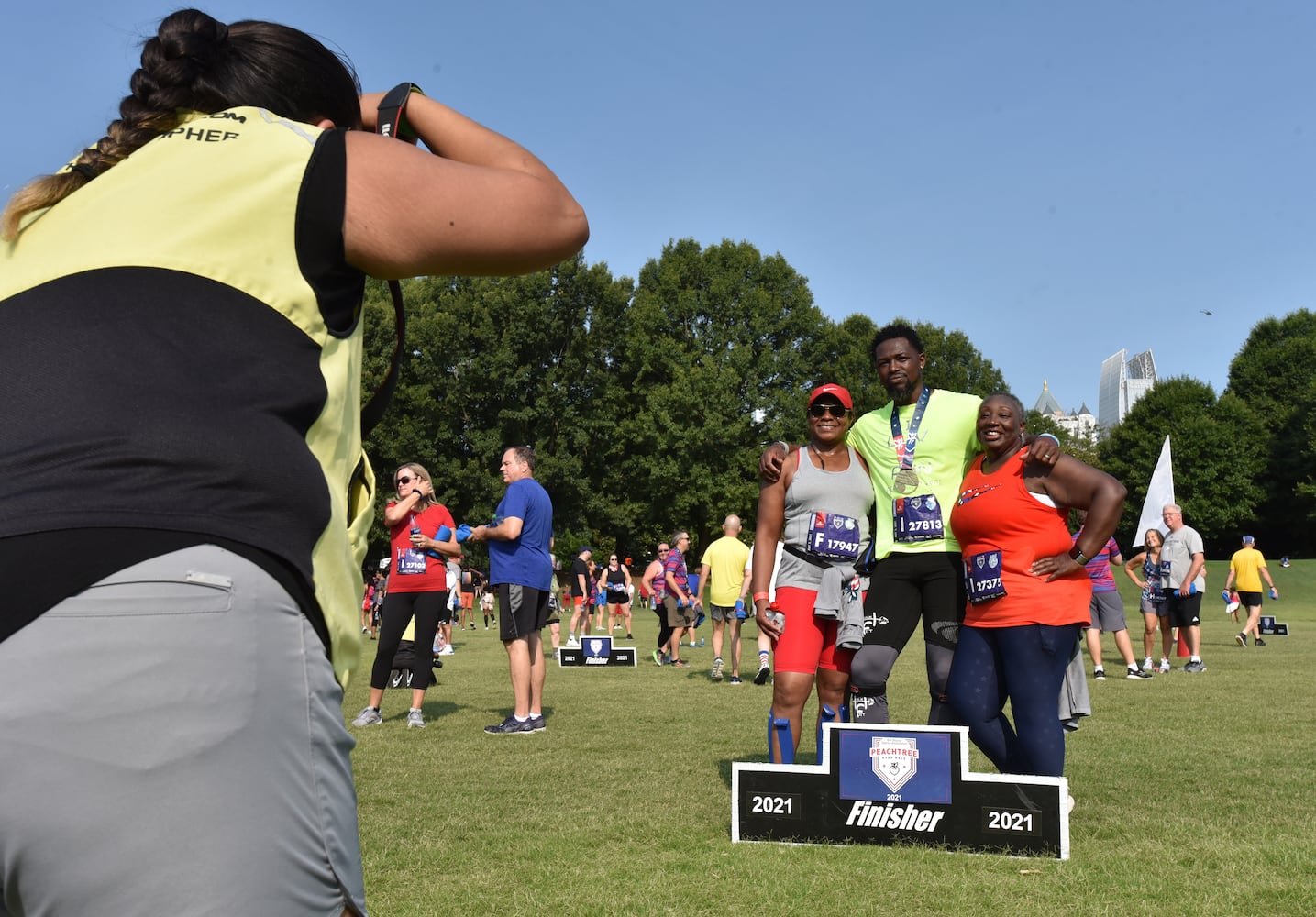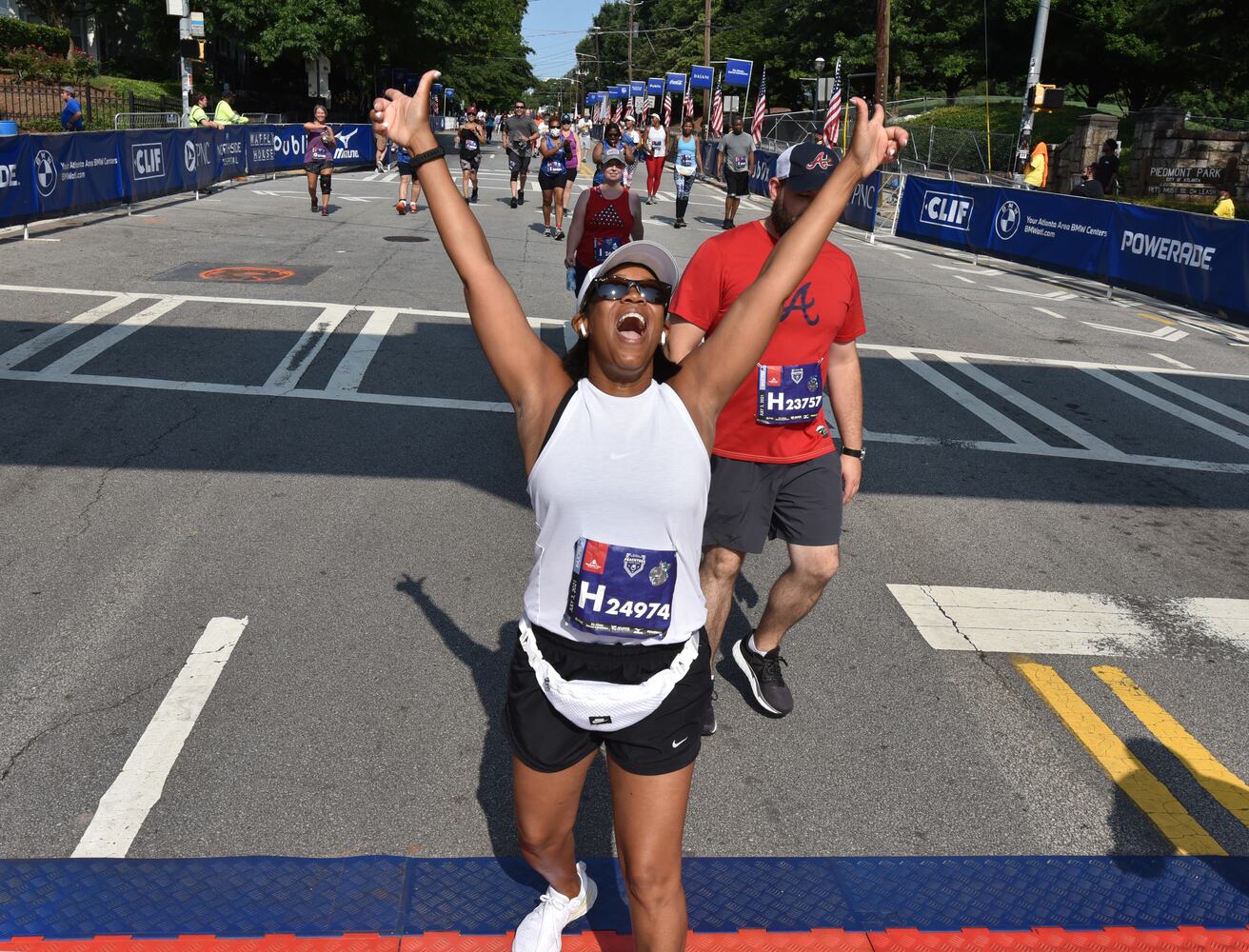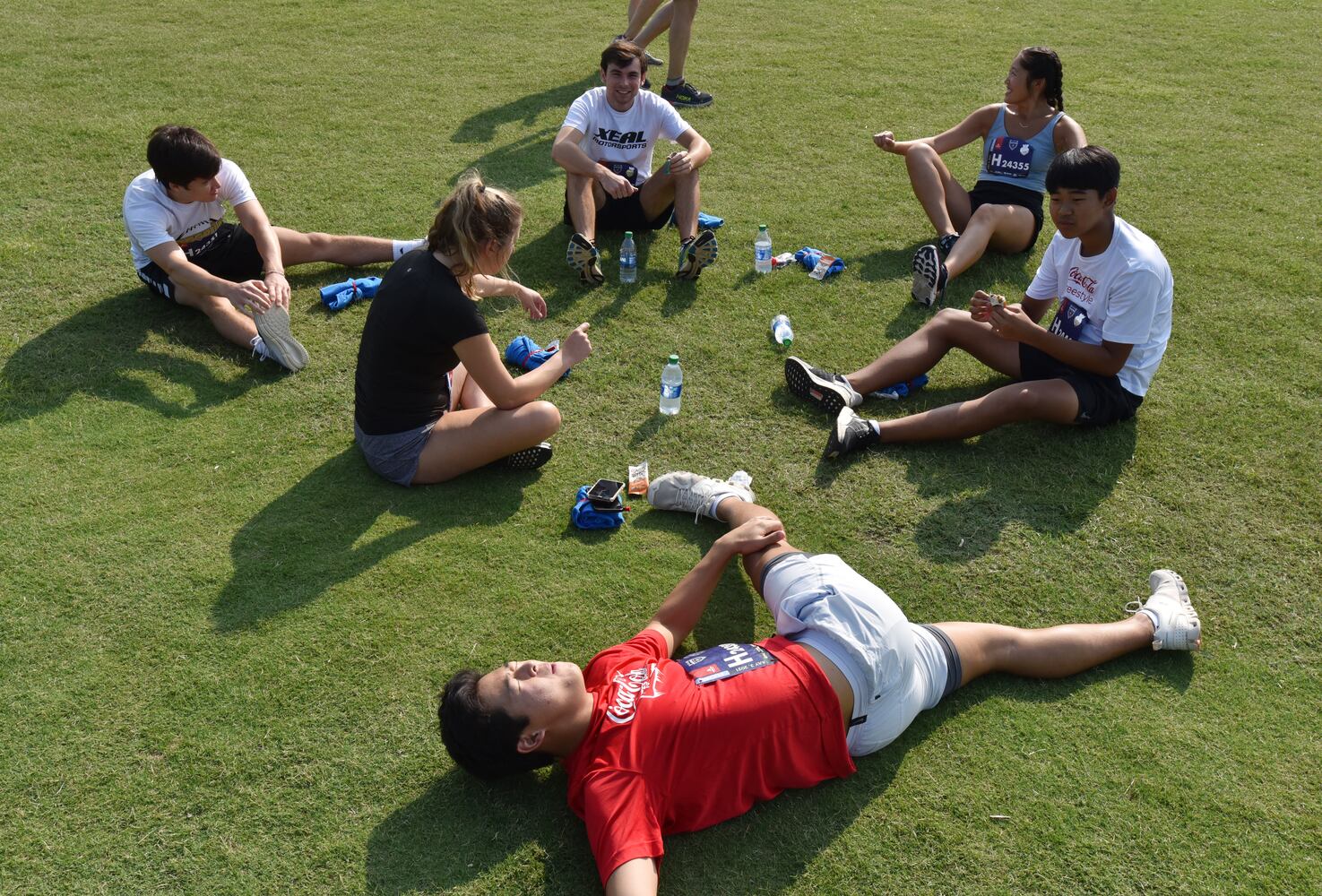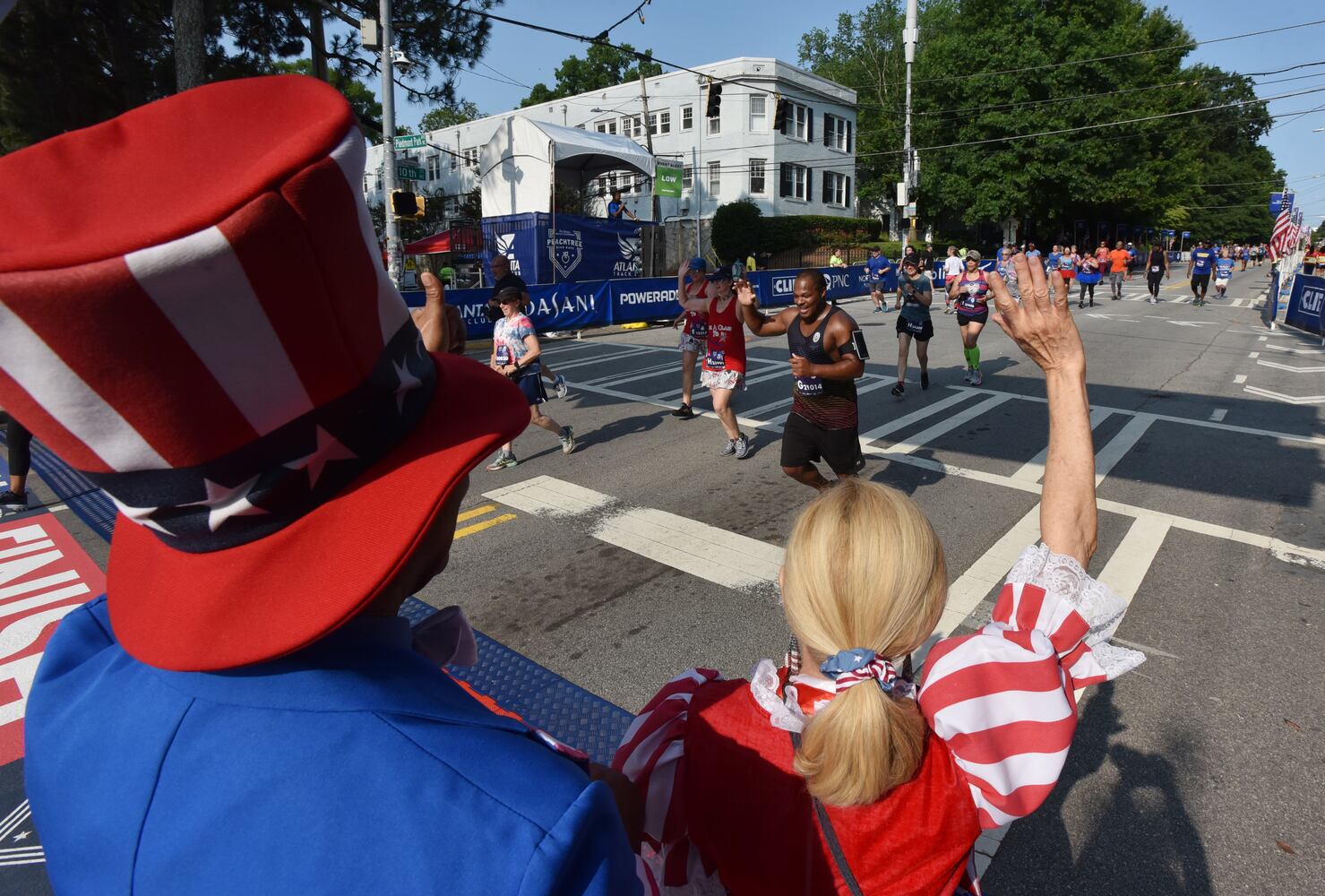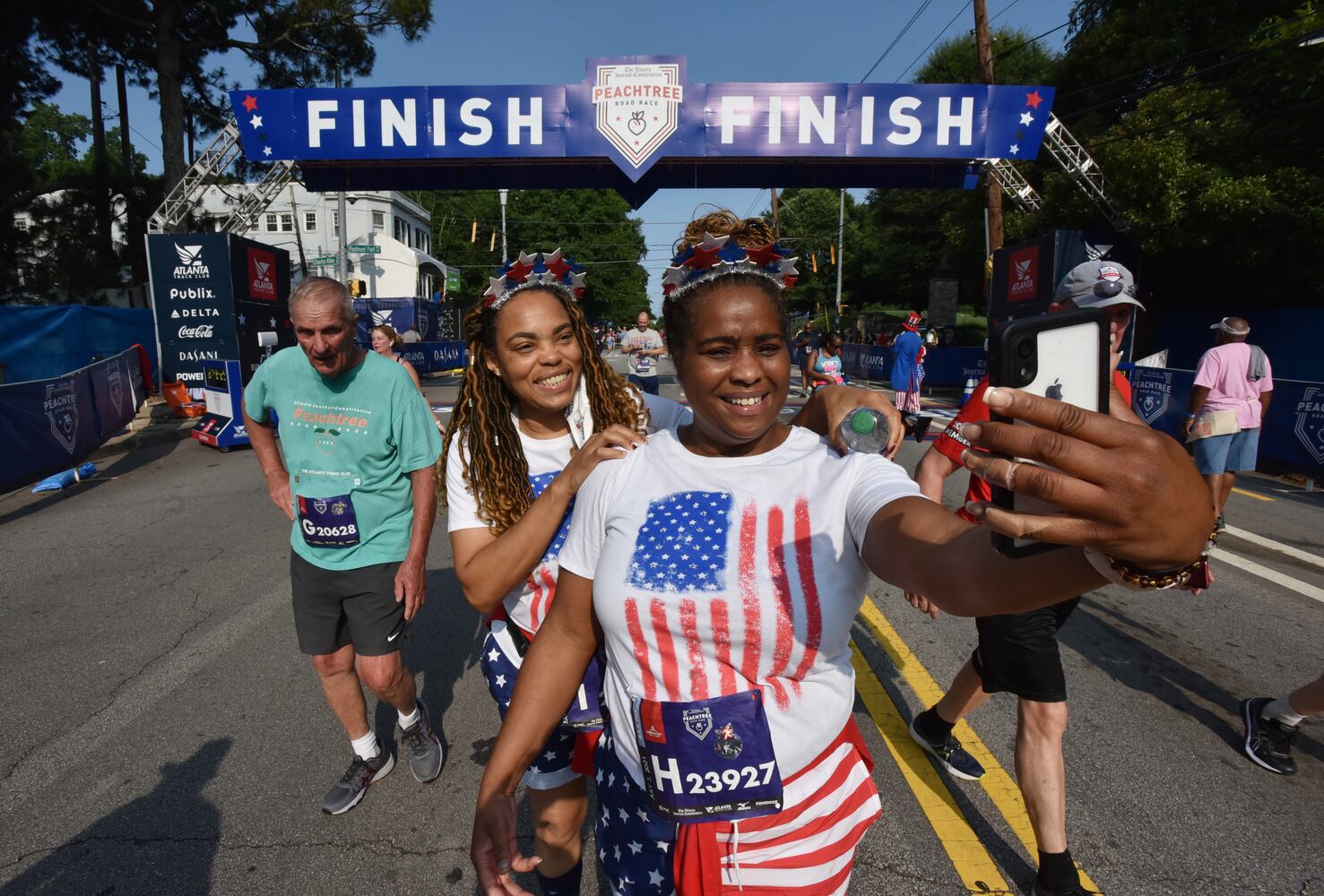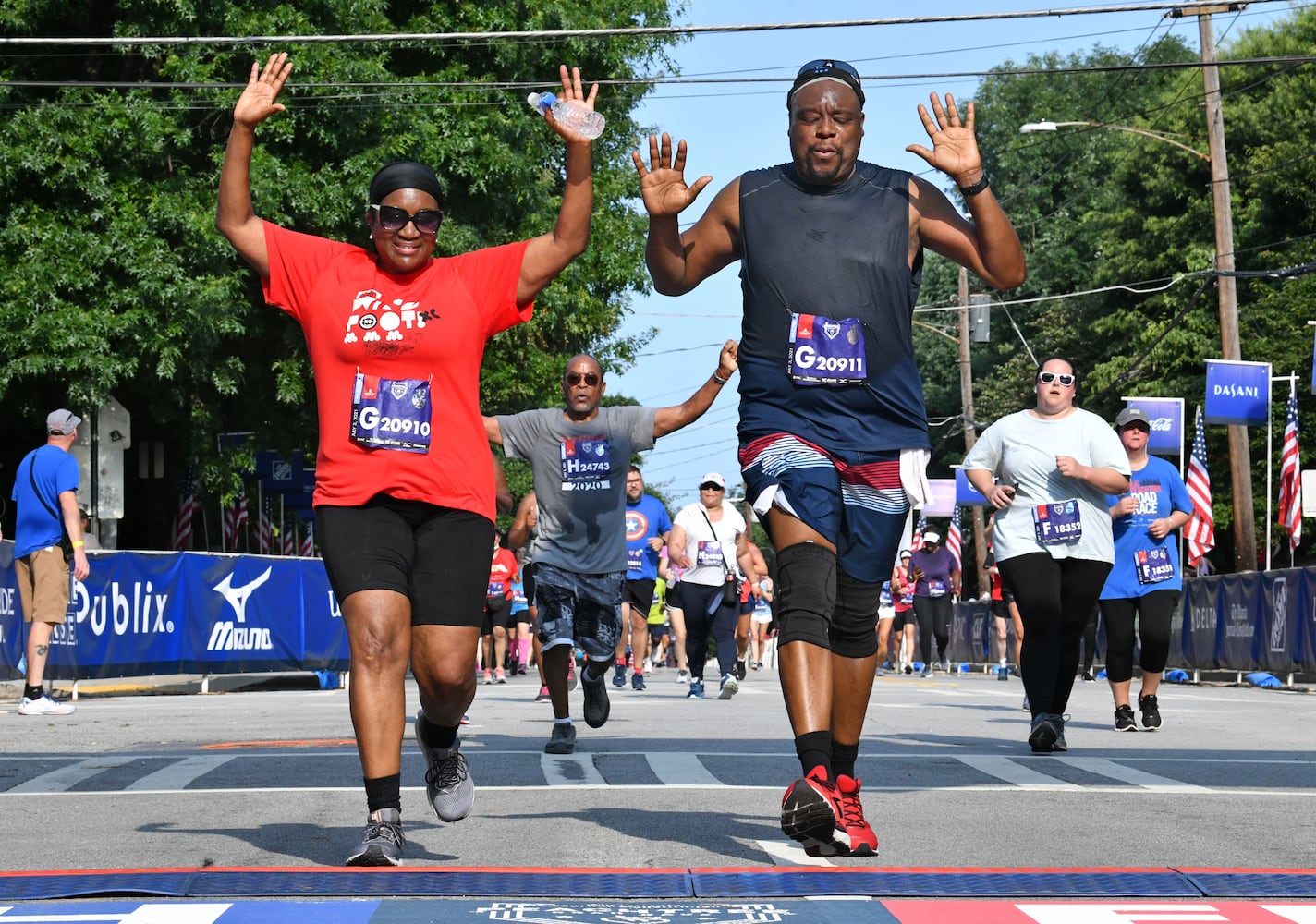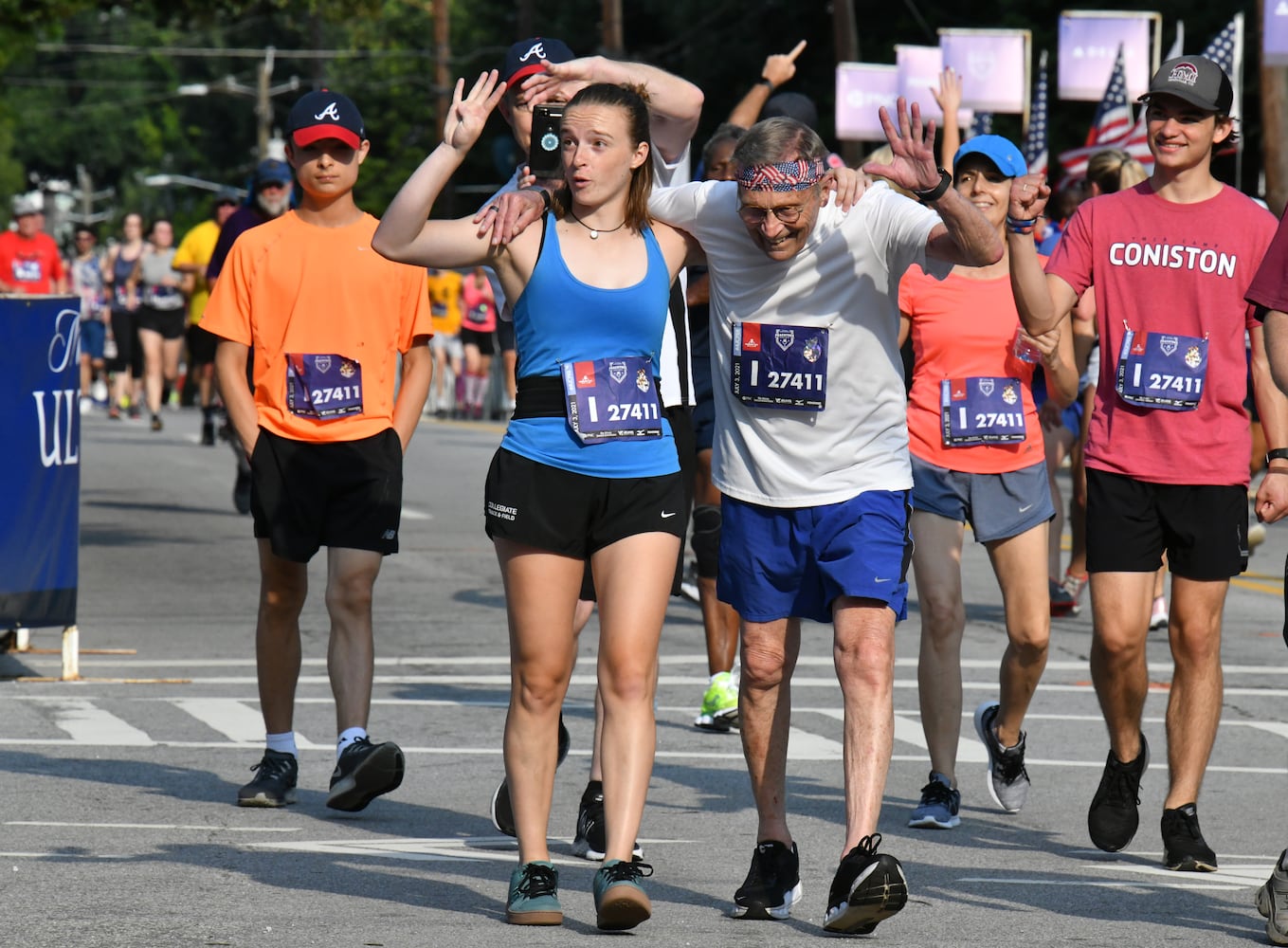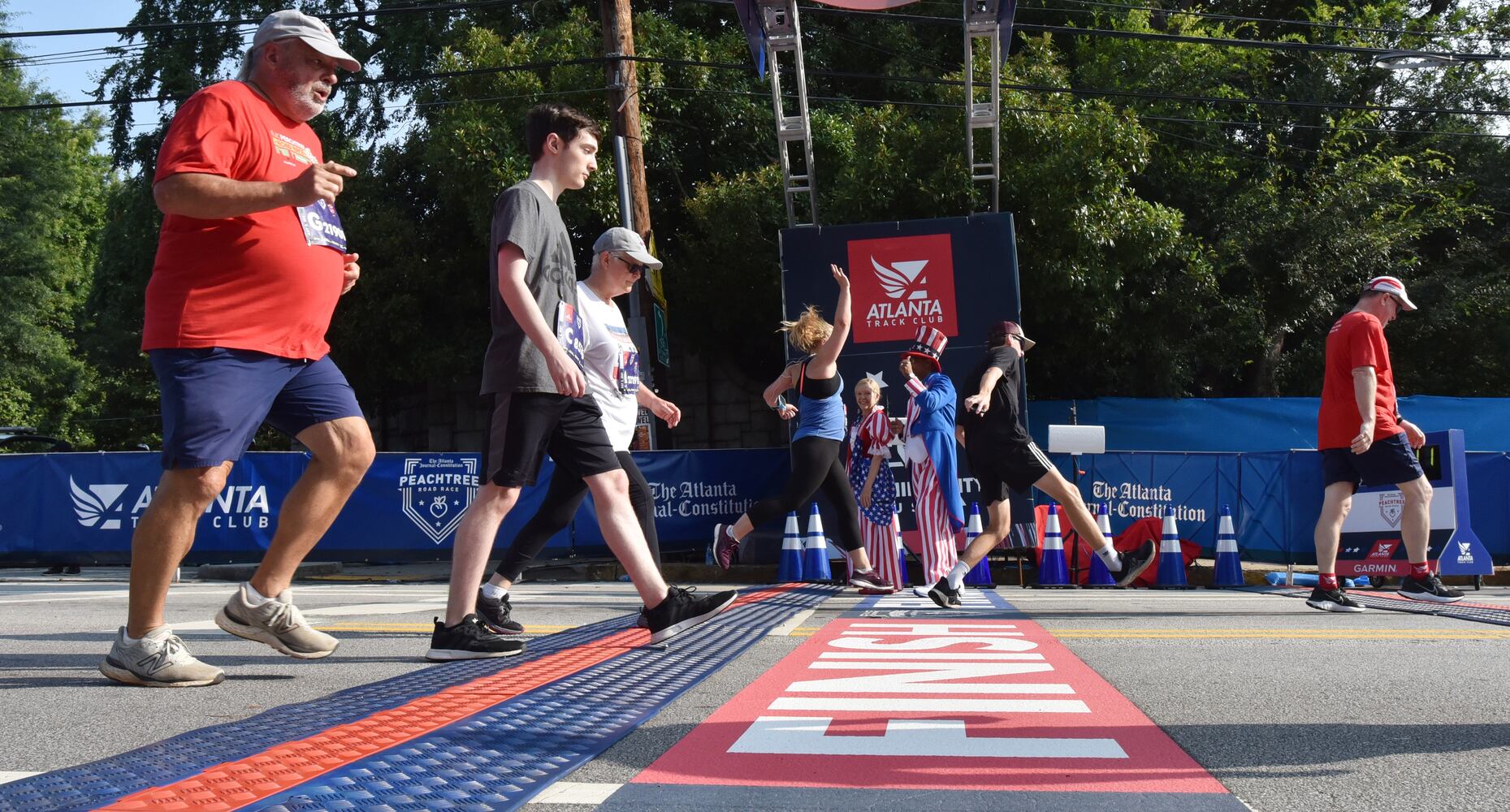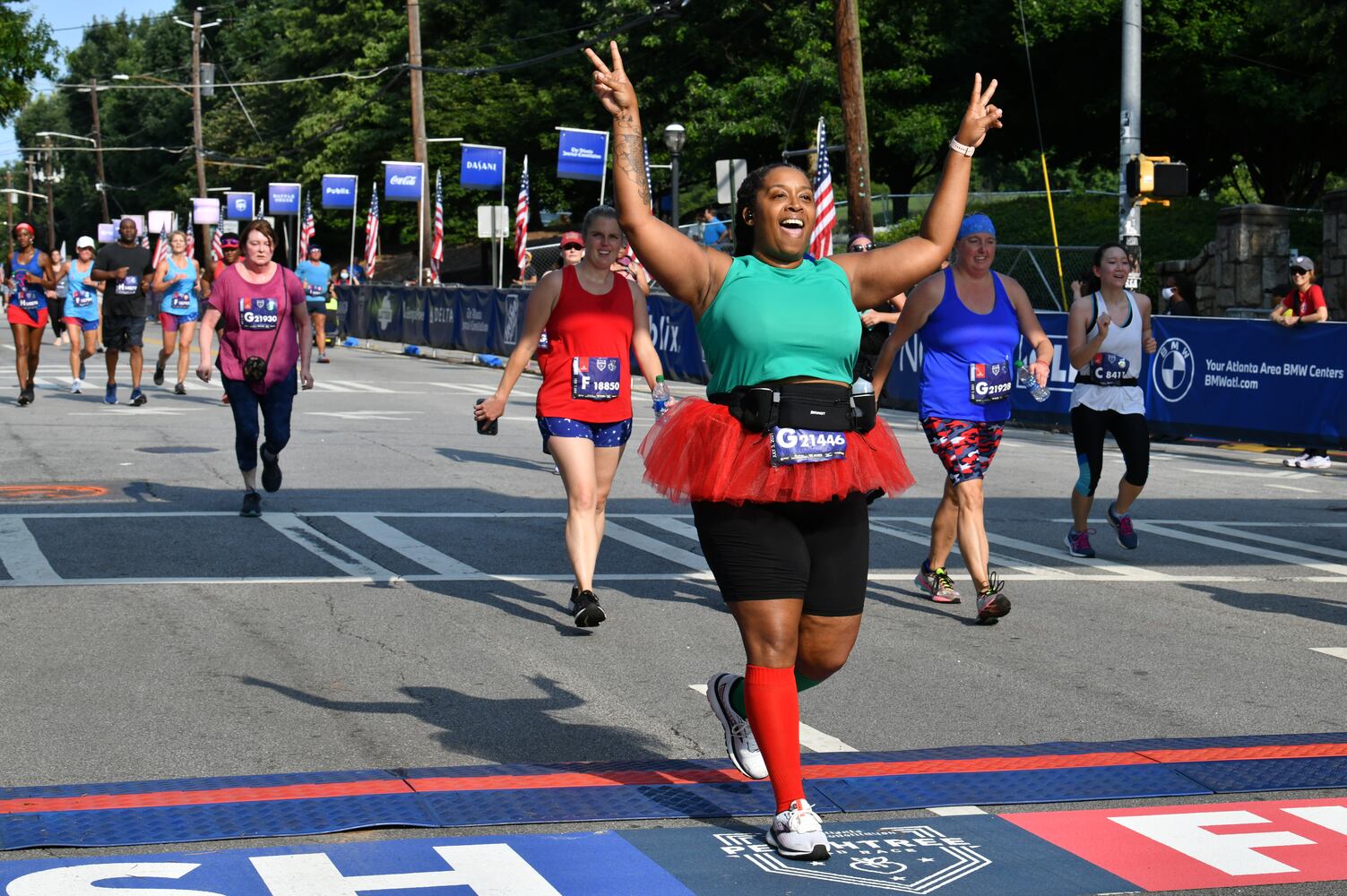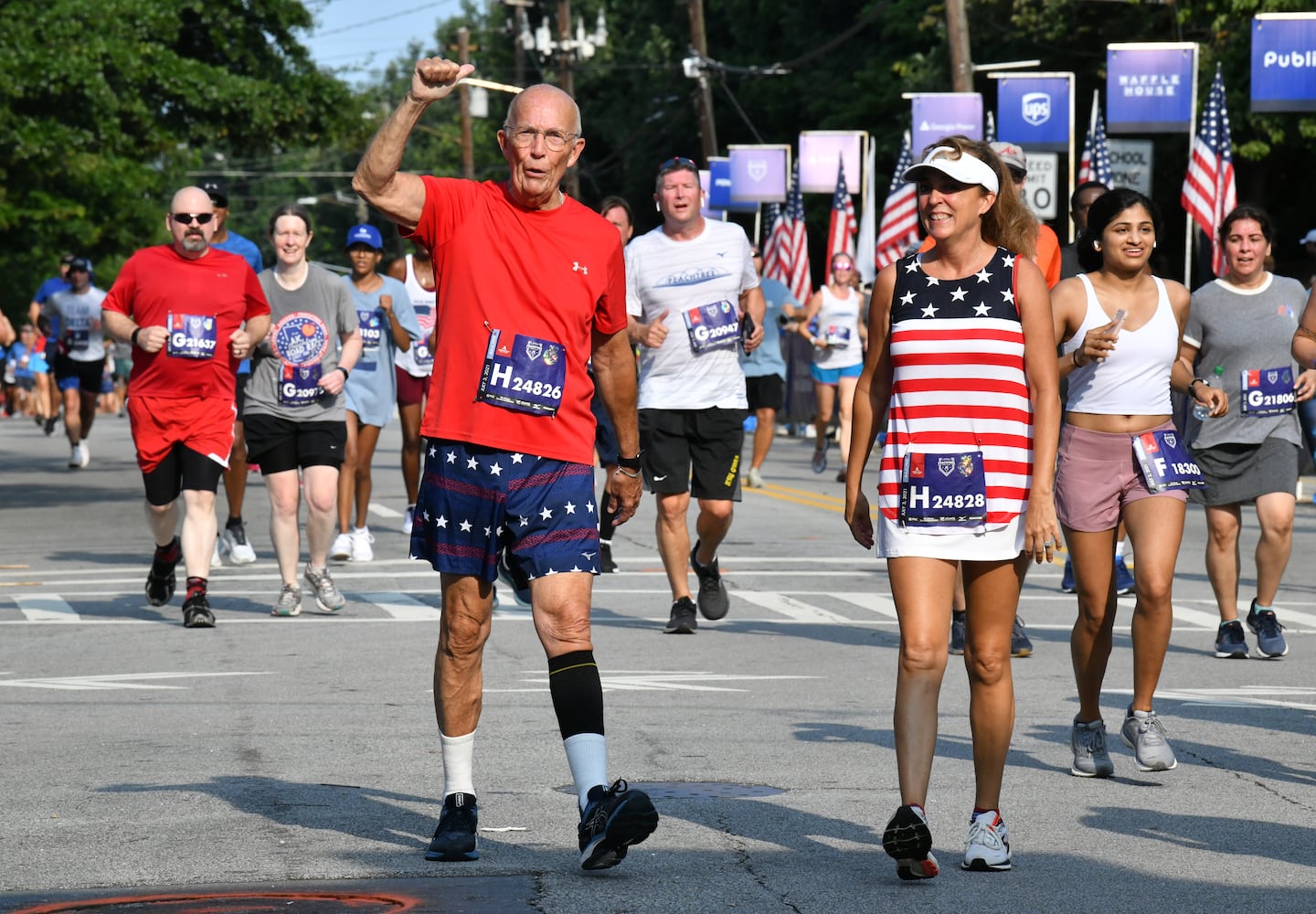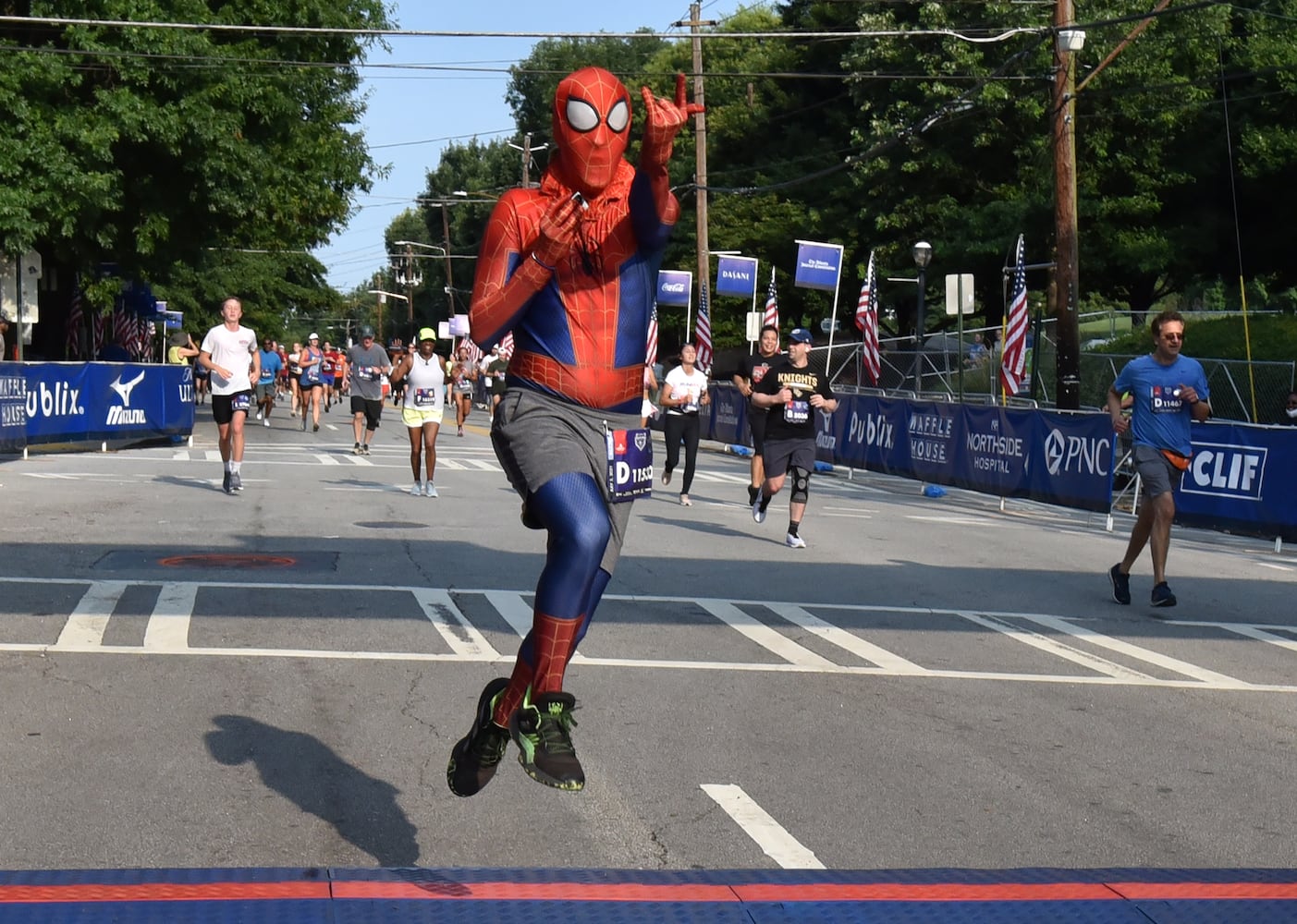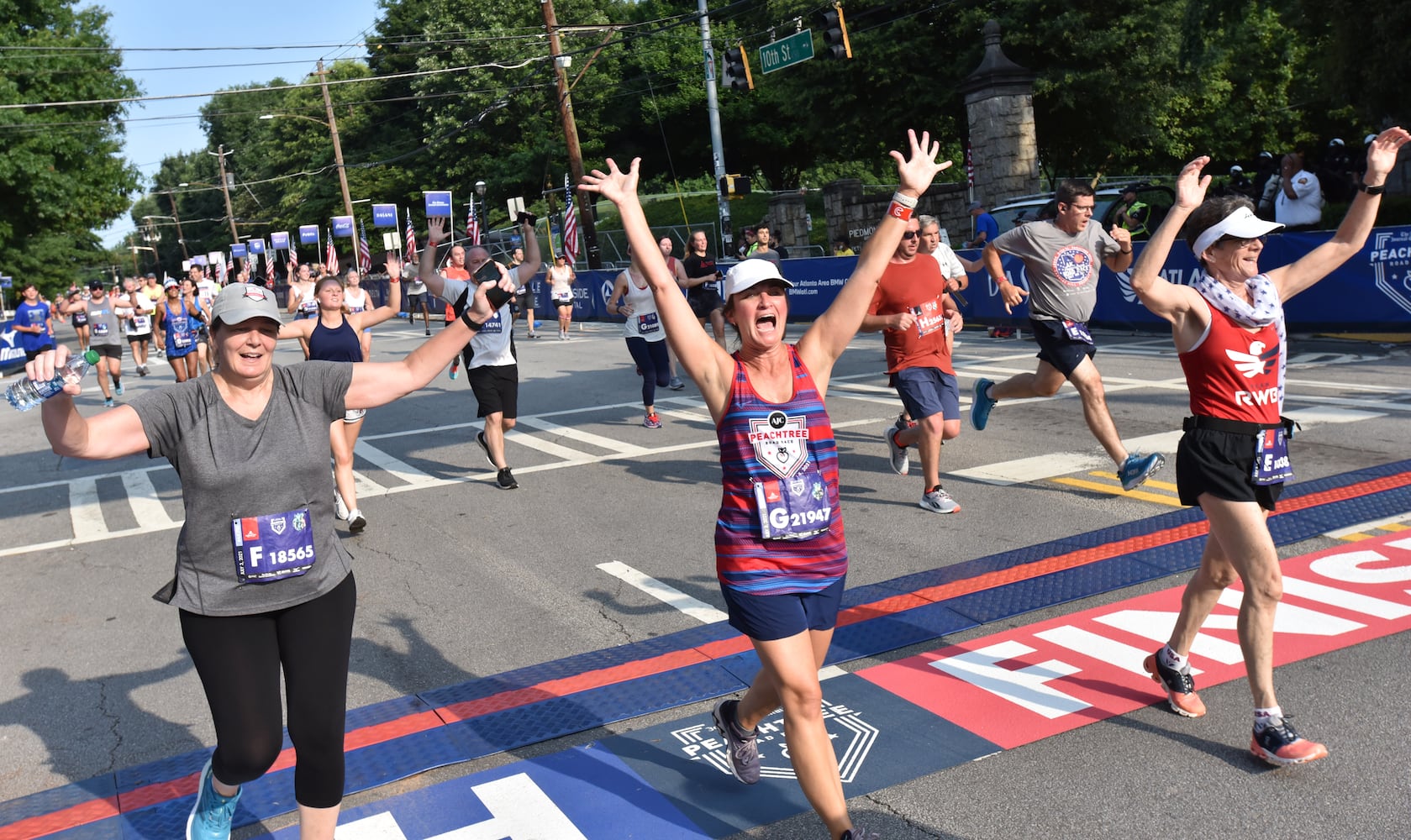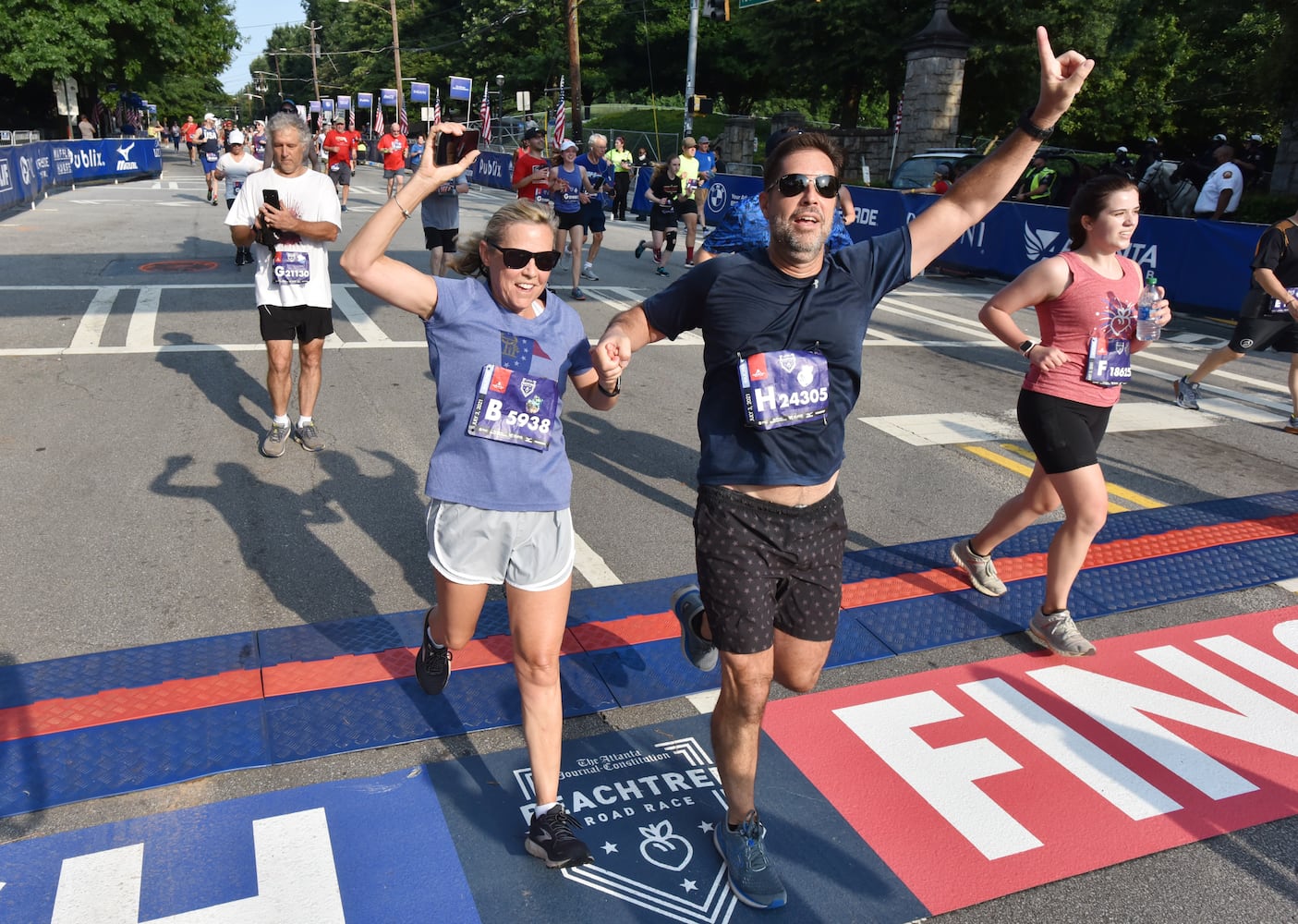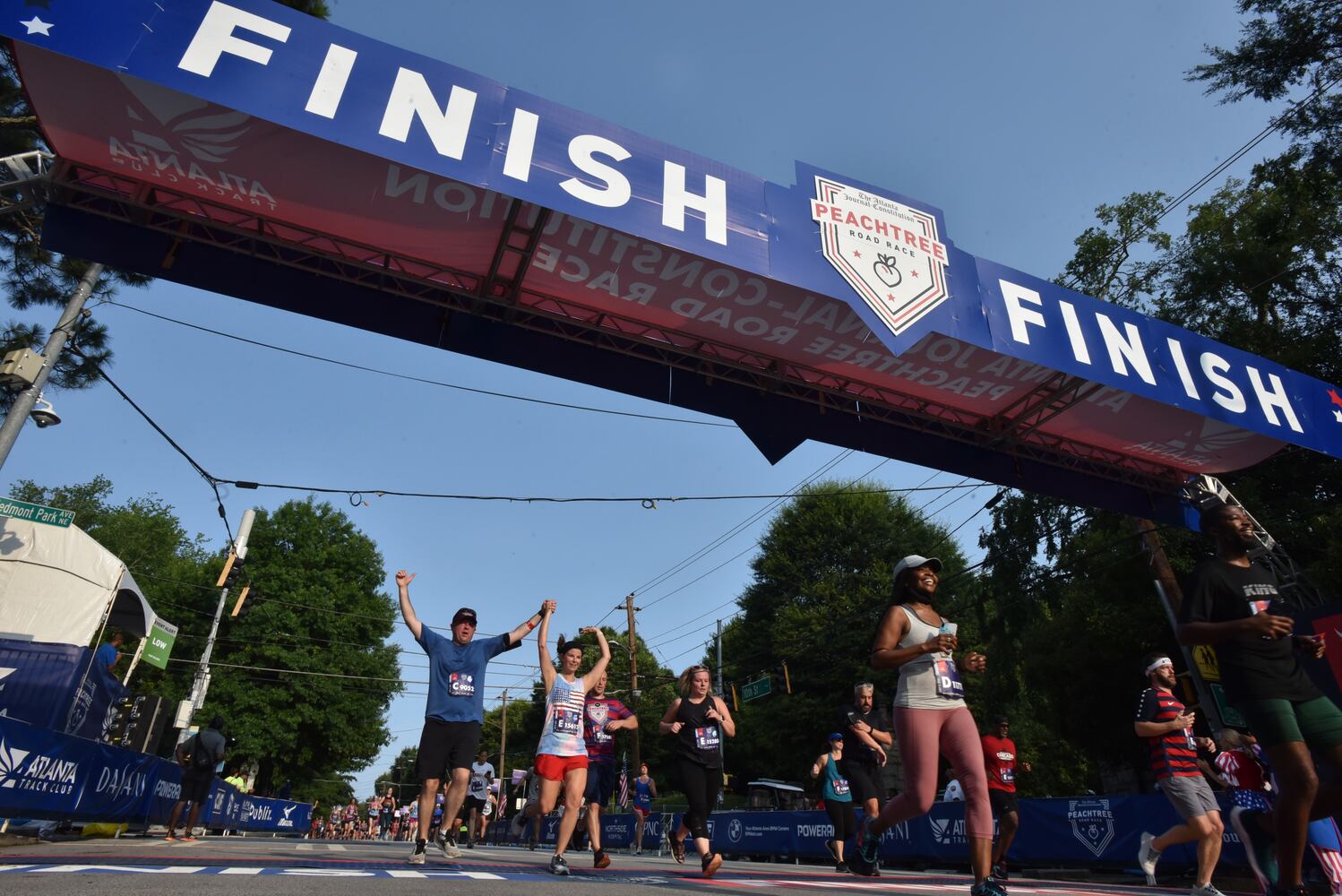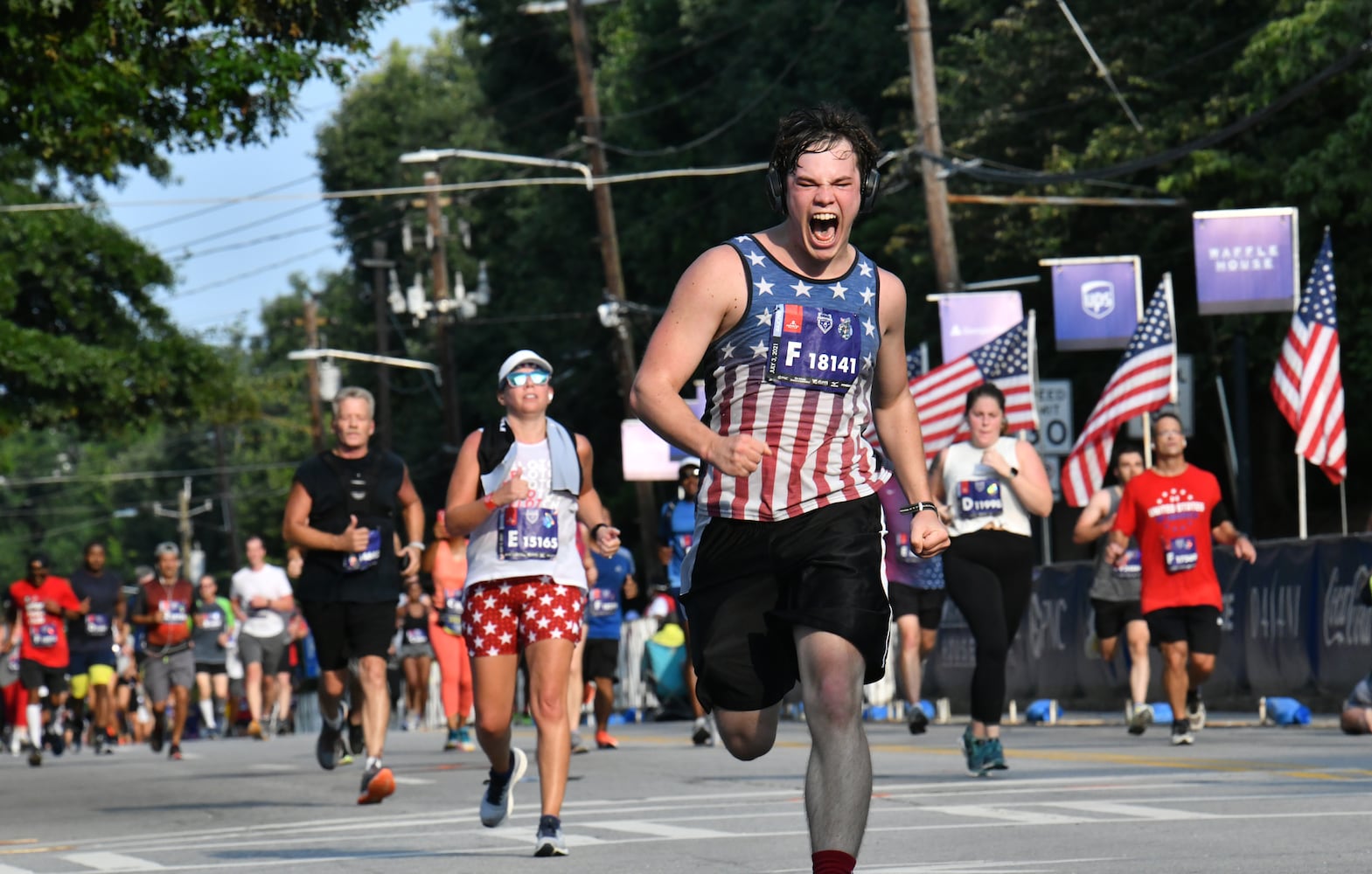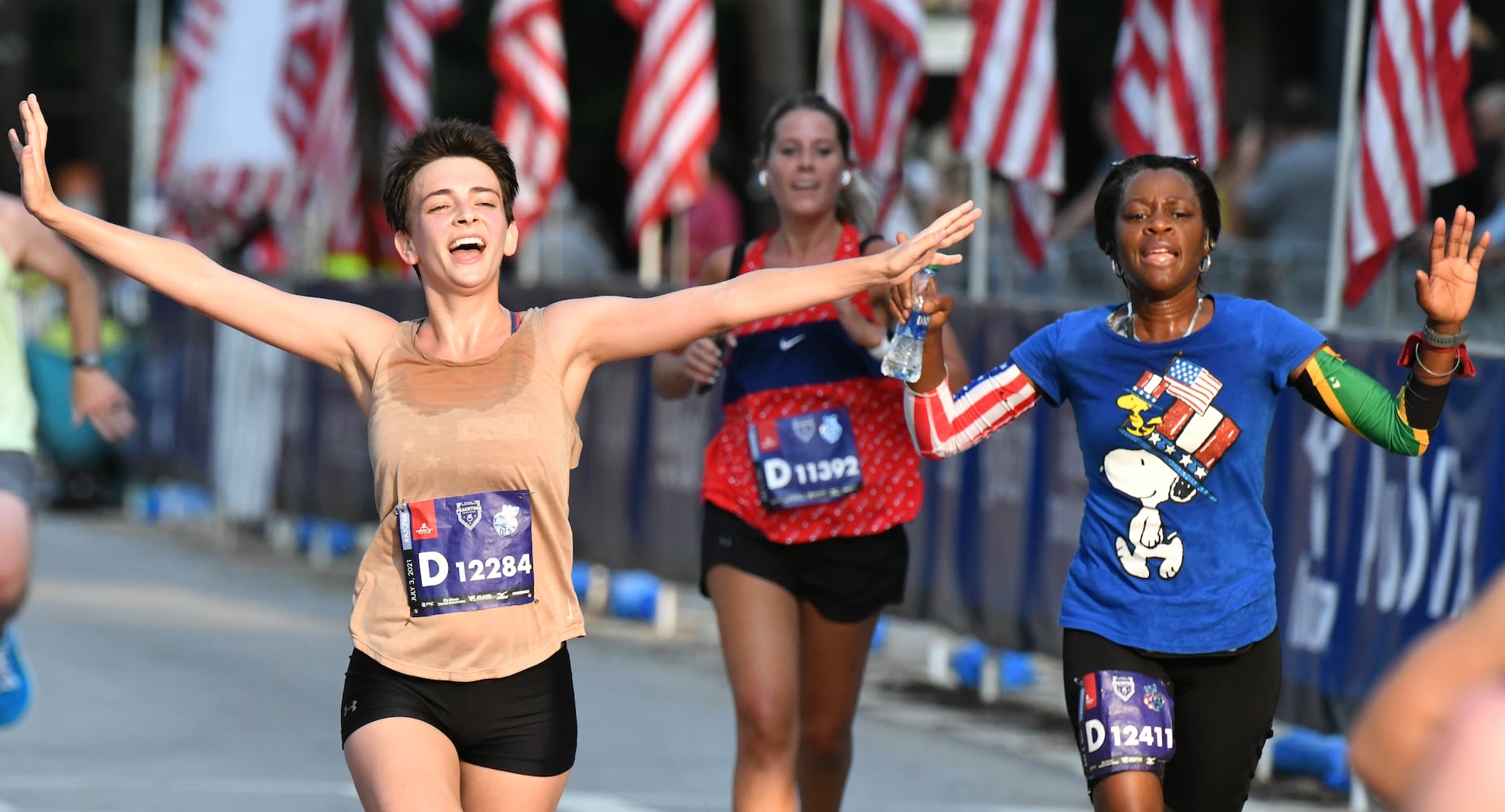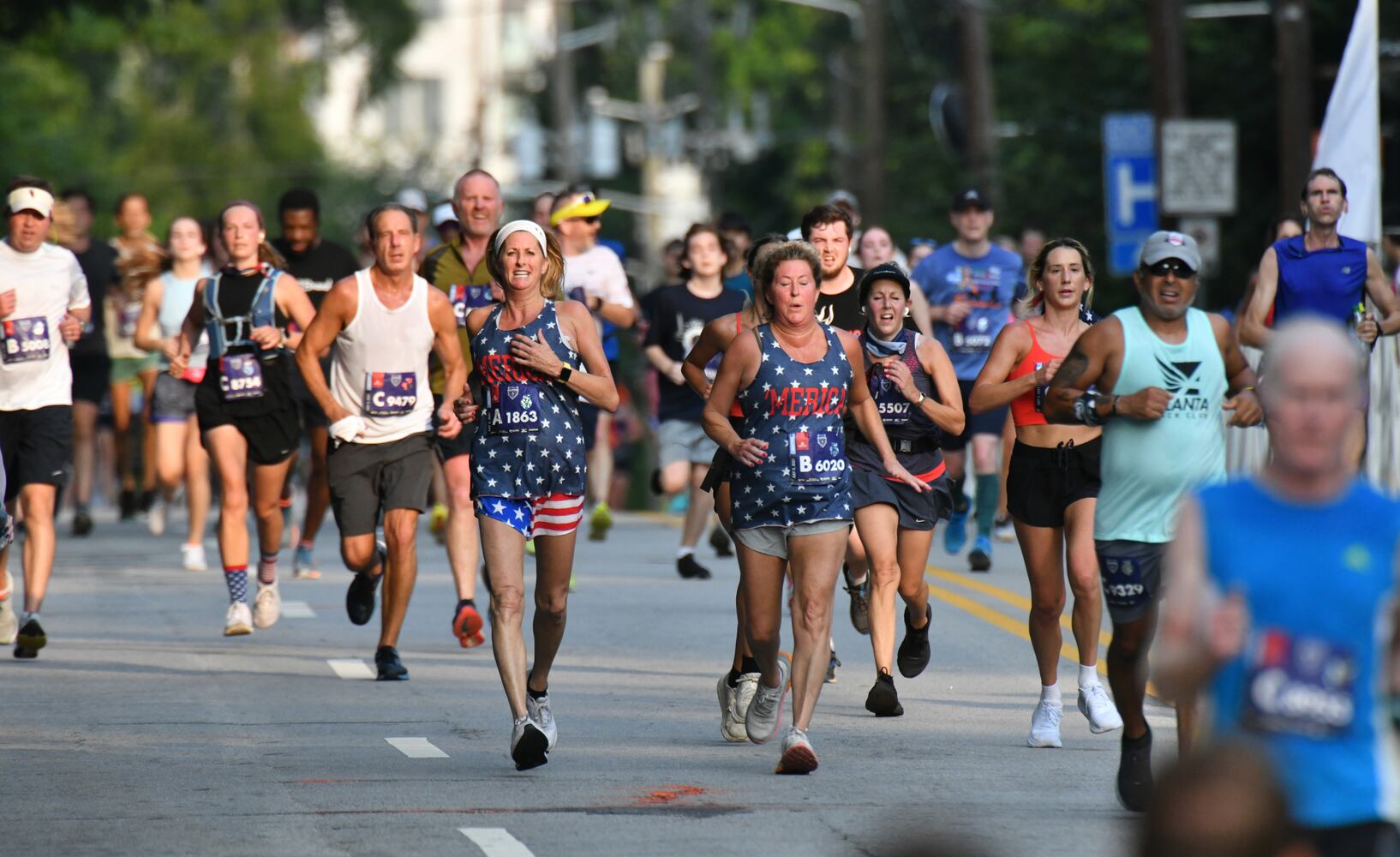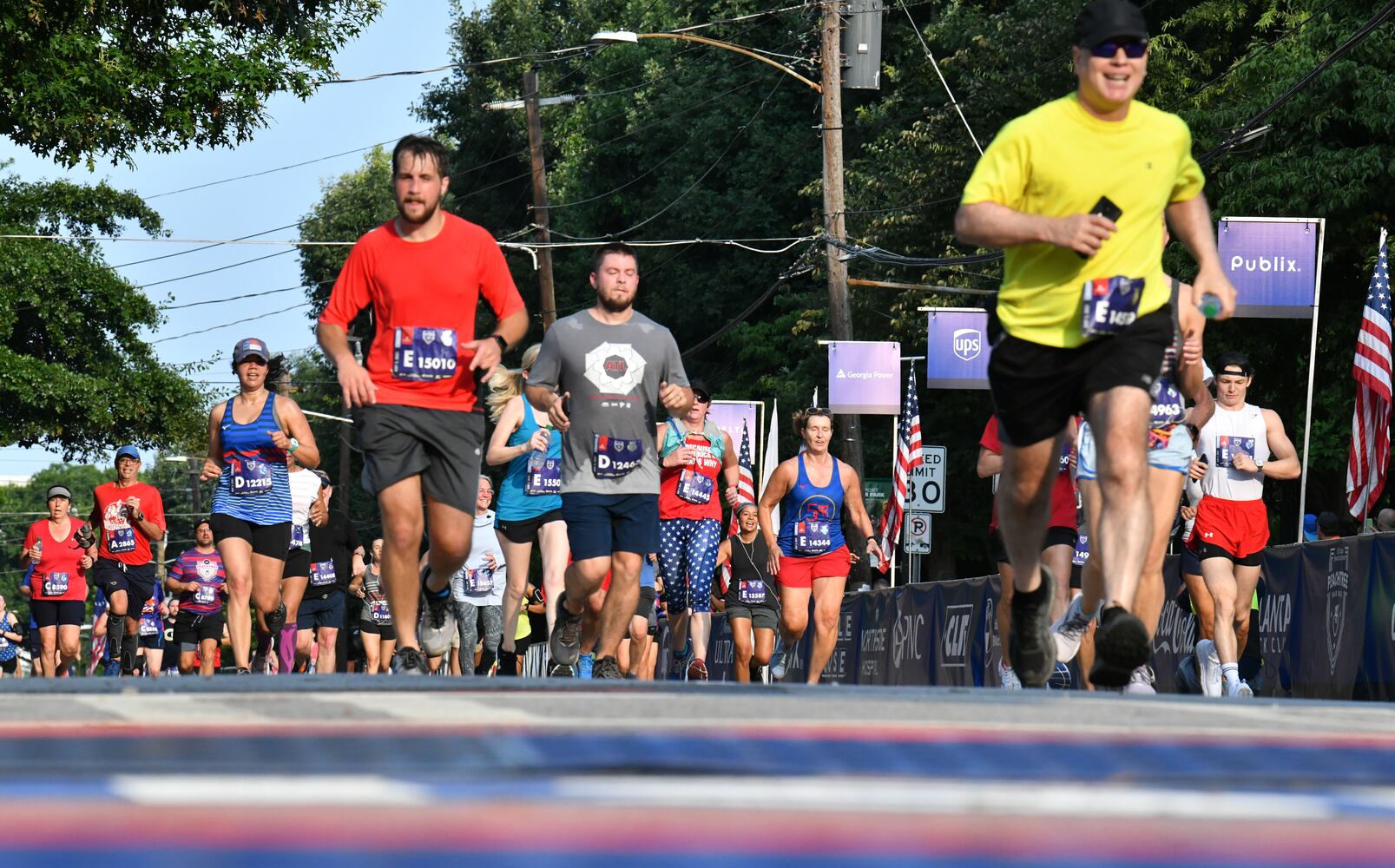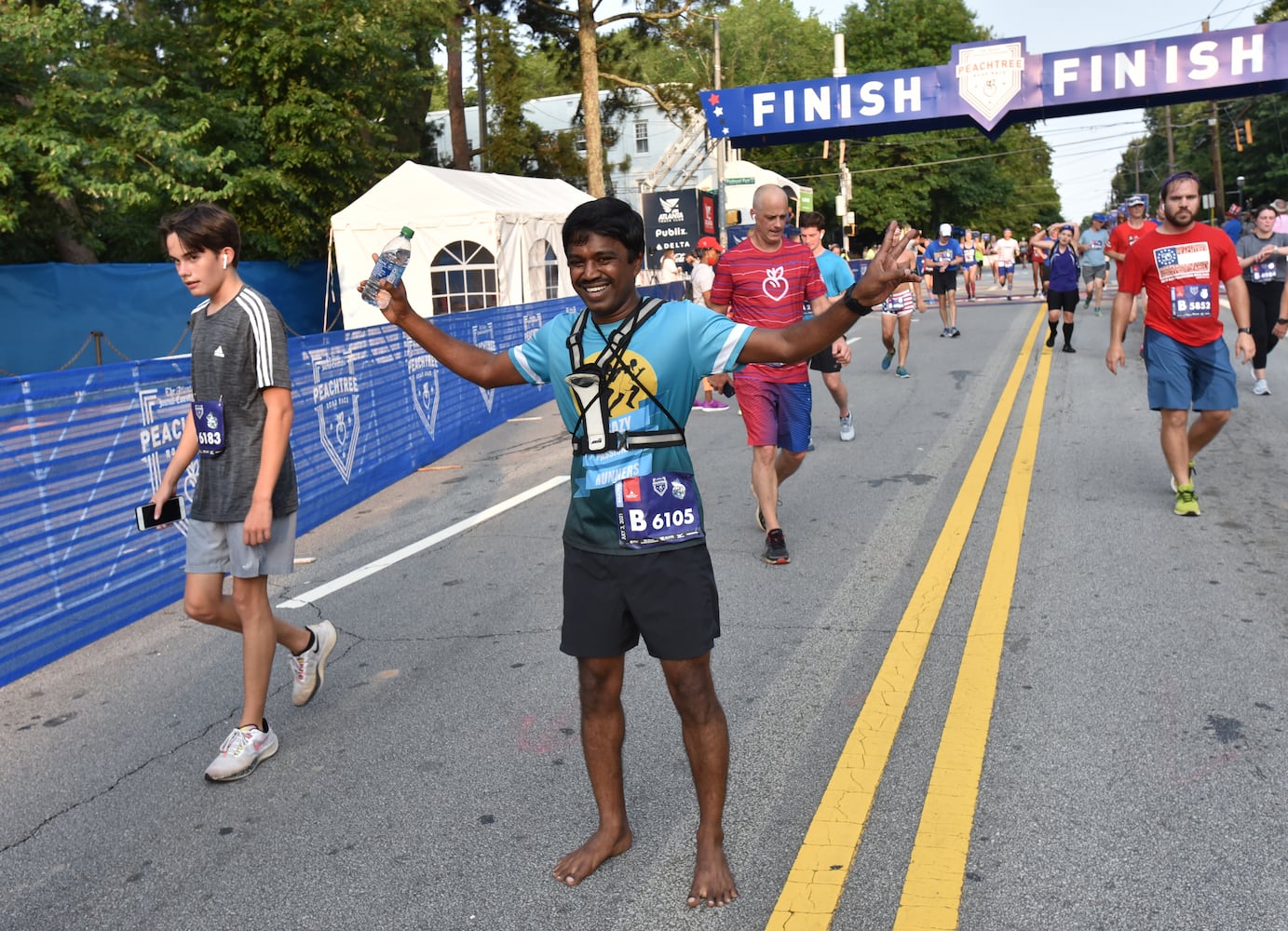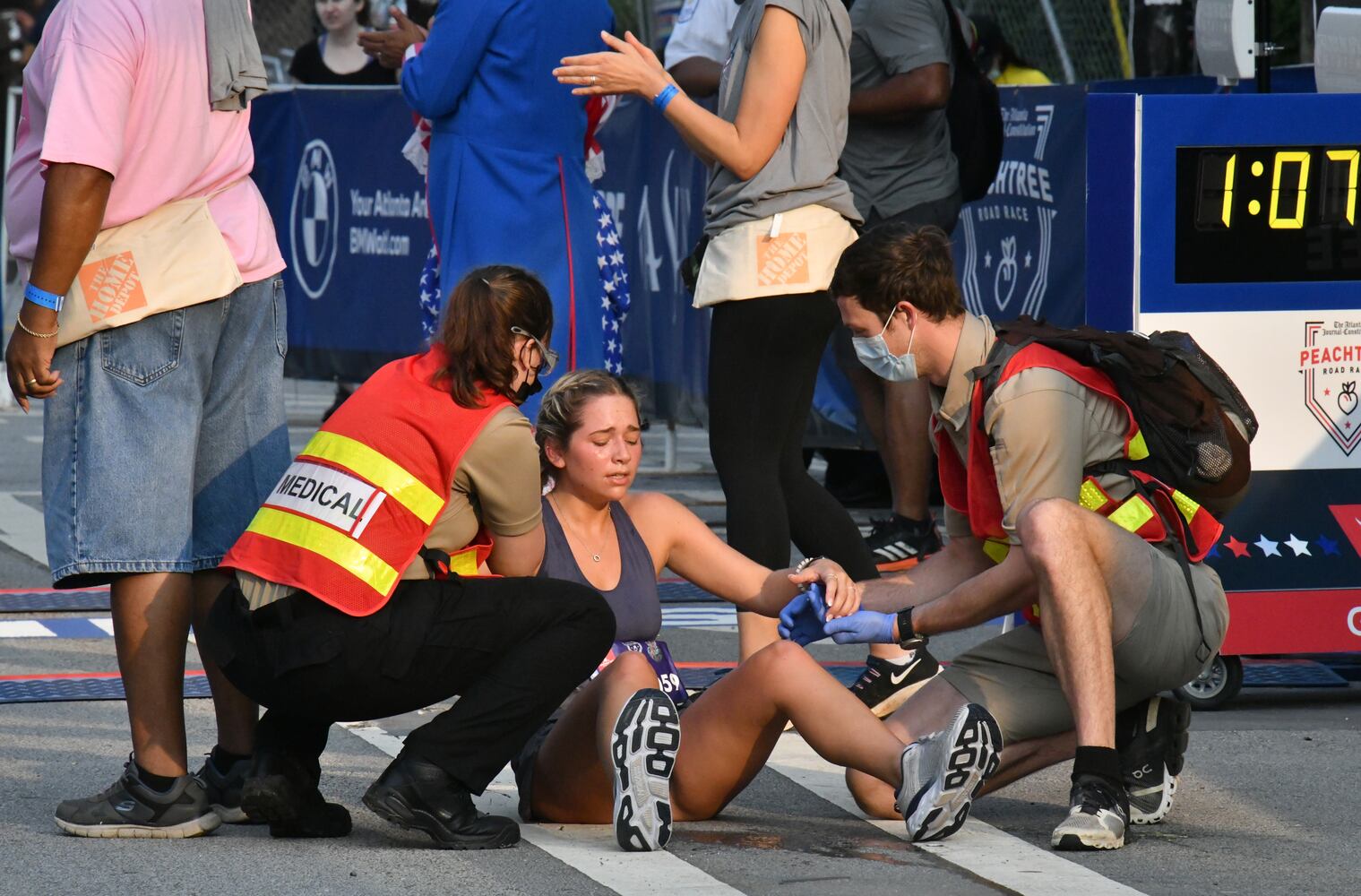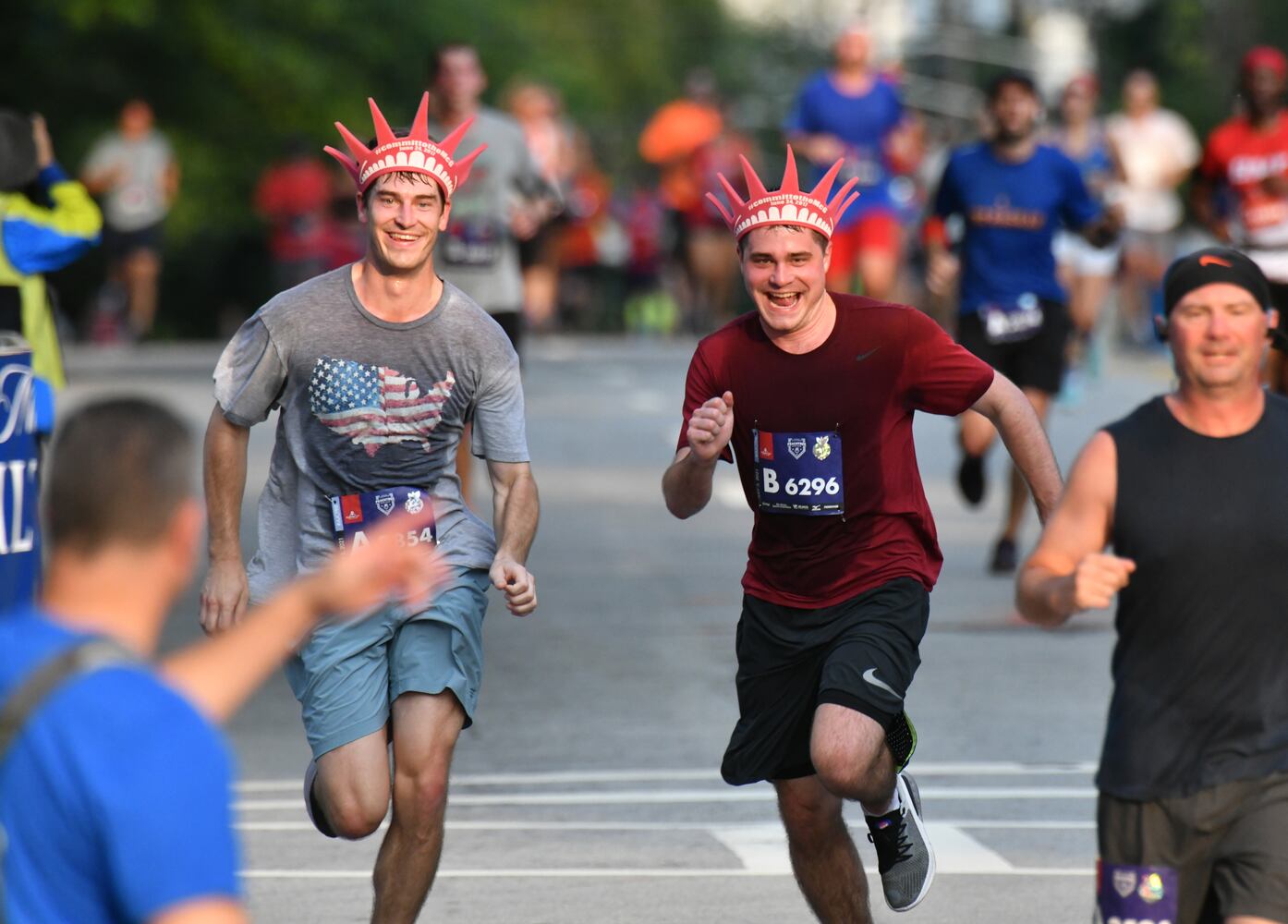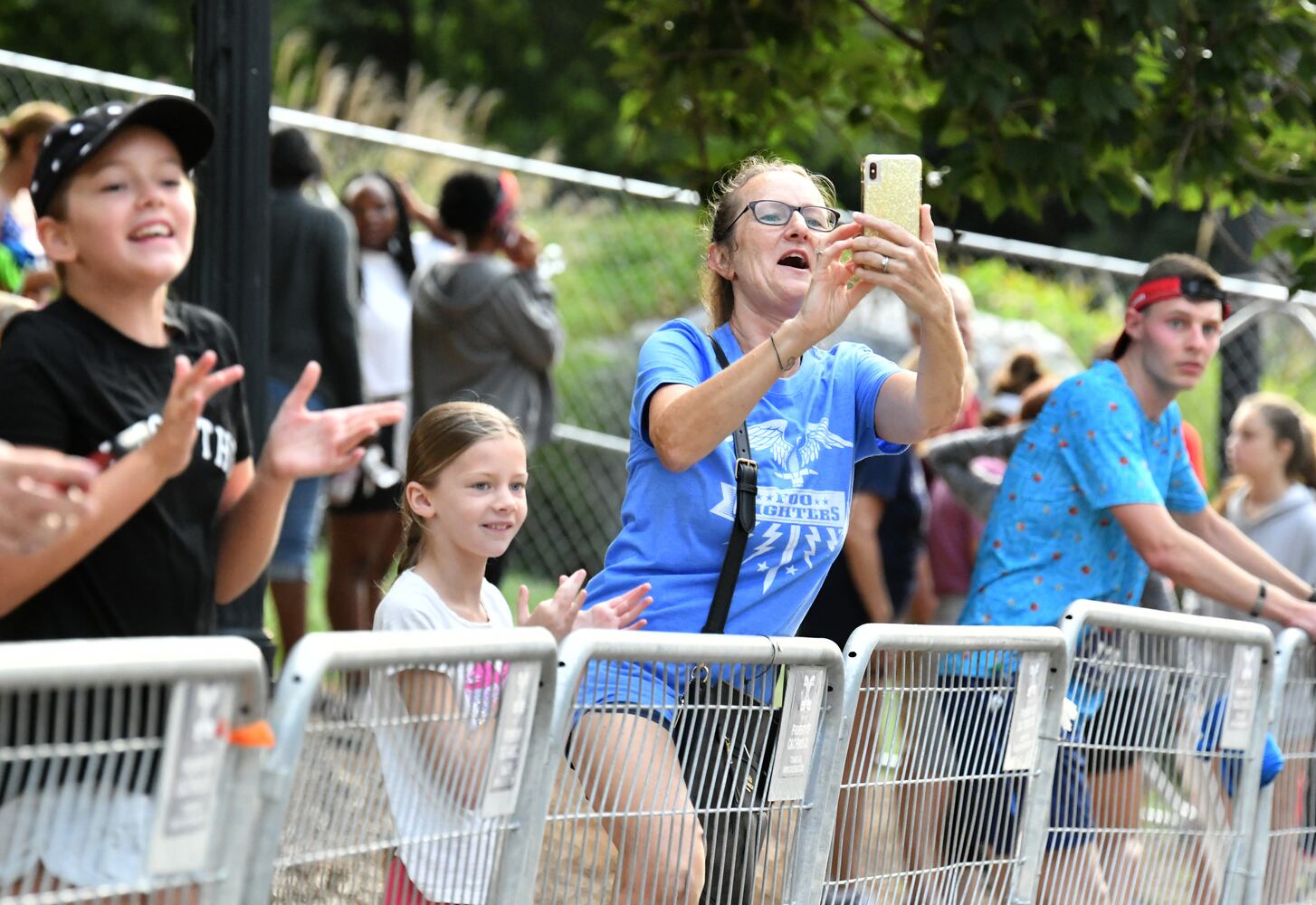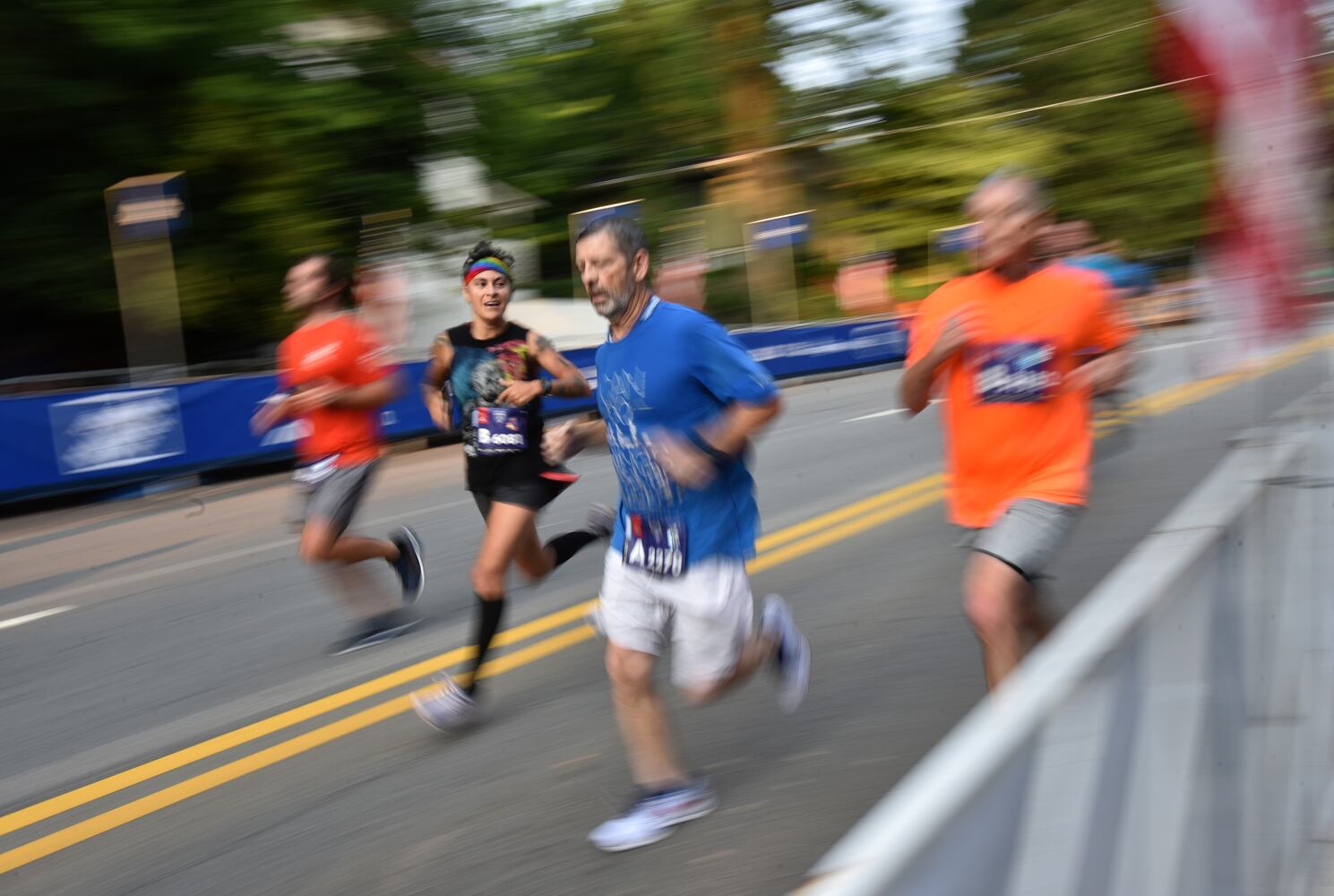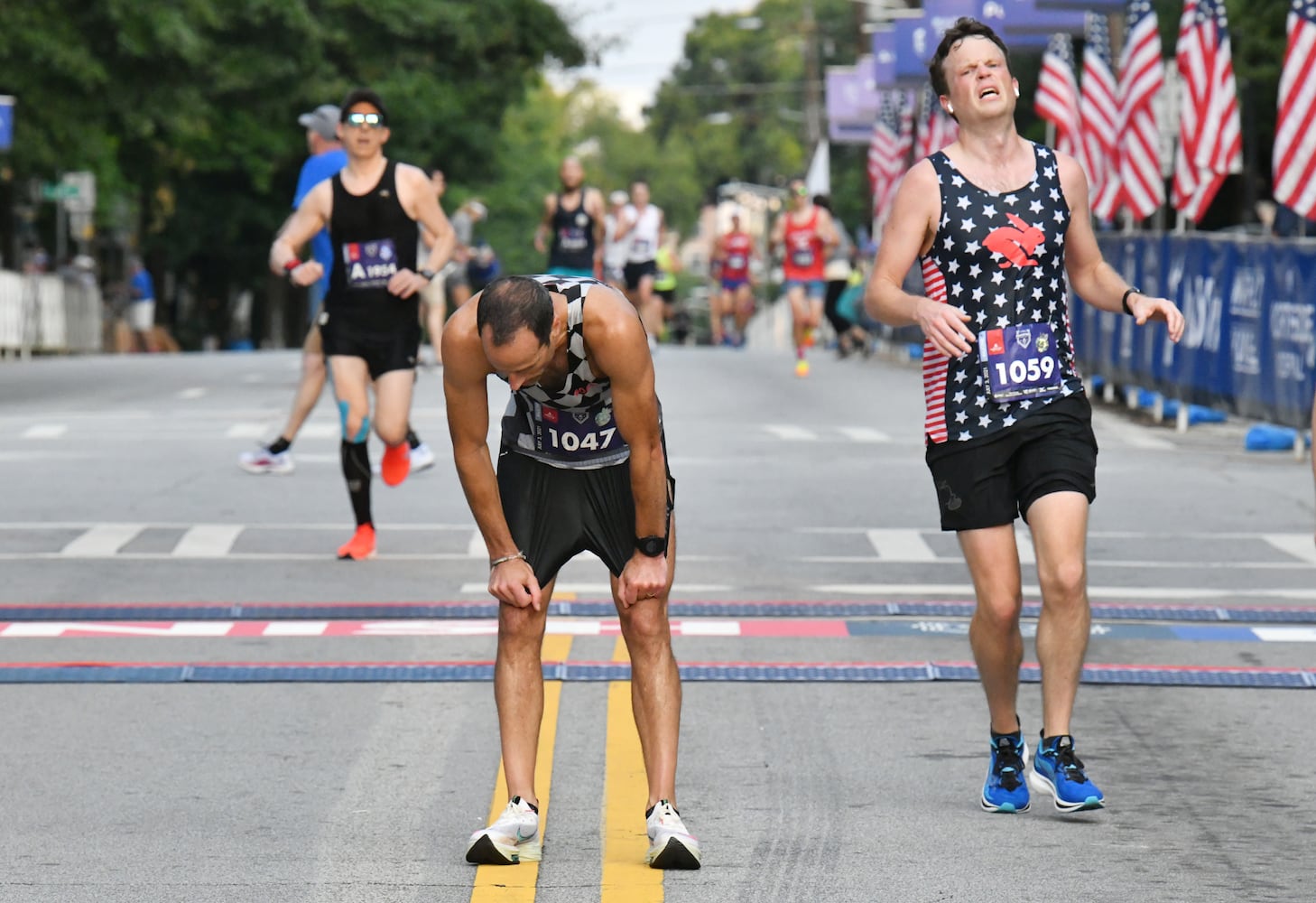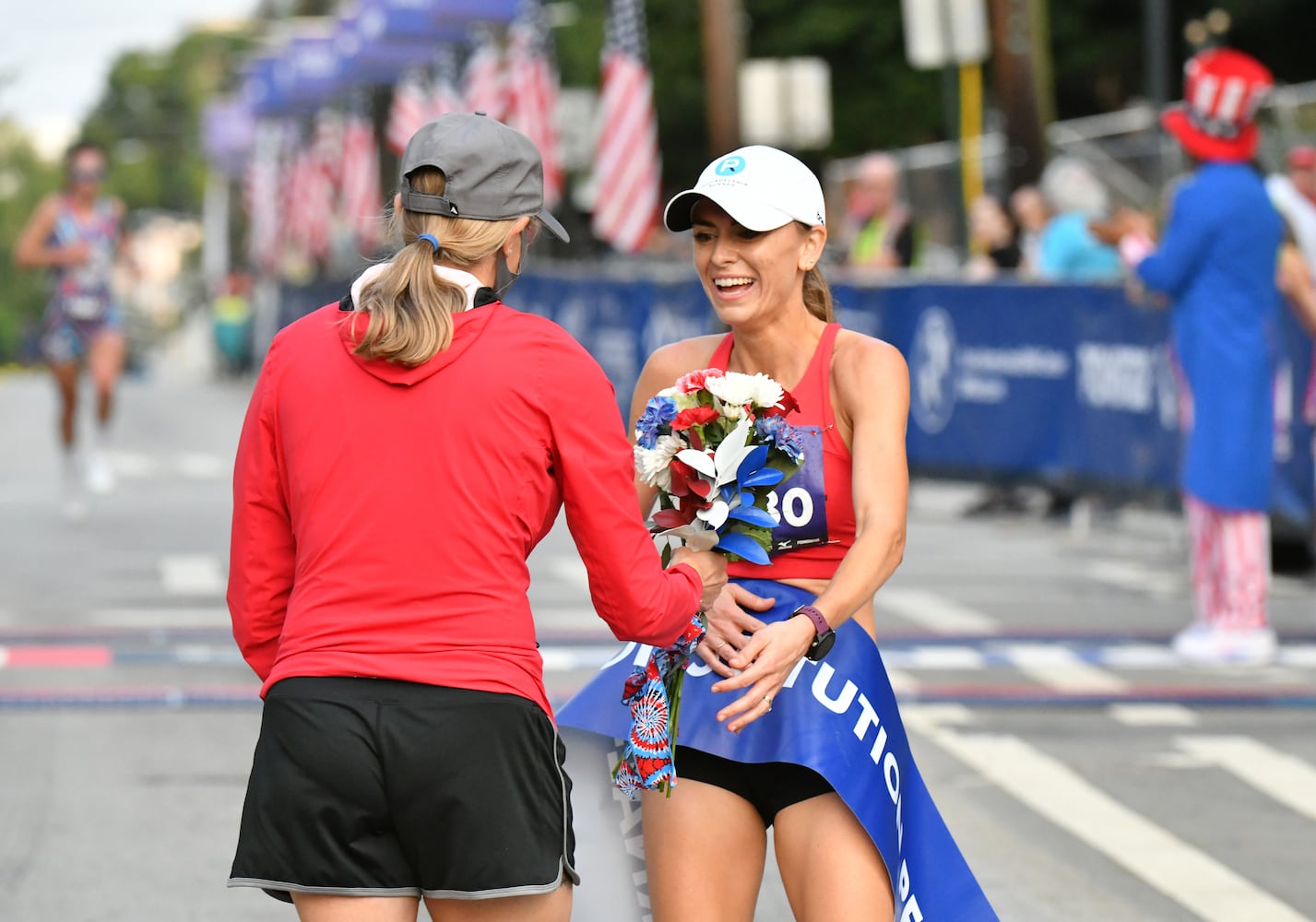With a muted feel and an emphasis on spacing, the Atlanta Journal-Constitution Peachtree Road Race re-emerged Saturday from its COVID-19 dormancy.
After the race was conducted in a virtual format in 2020, Saturday’s participants noted changes from previous Peachtrees, but gladly welcomed back the beloved Atlanta institution, running and walking the 10-kilometer race down the city’s main thoroughfare in the company of thousands.
“It was a lot more quiet because there weren’t as many spectators,” said Phoebe Chiem of Duluth. “It just depends on what you like. It’s not the same excitement level, but I’m so glad they put on the event.”
From the start at Lenox Square to the finish area at Piedmont Park, the attention given by the Atlanta Track Club to providing participants with their own space was difficult to miss. It began with the race being conducted on back-to-back days (rather than solely on Independence Day, as had been done in the event’s first 50 years) and each day’s field being capped at 20,000. Since 2011, the Peachtree had maxed out at 60,000, making it the largest 10K in the world.
On Saturday, there were 13,000 registrants, meaning the volume and density was less than a quarter of what it has normally been. Another 17,000 or 18,000 participants are expected for Sunday.
“It felt like a small hometown race,” said Jennifer Huwe of Chattanooga, who ran in the first start wave with her husband, Kevin. “You had room to breathe, which was really nice.”
The last time the Peachtree was as small as Saturday’s field was 1978, when the race was still in its first decade of existence.
“We’ve gone back to the future,” said Rich Kenah, executive director of the track club and race director of the Peachtree.
The holding corrals before the race were expanded, and participants, nearly all of whom chose to go without masks, gave each other space. Fan presence was sparse. On the course, participants noted fewer numbers of the live bands that give runners and walkers needed shots of energy.
“It’s not the same level of intensity, it seems like,” said Richard Smith, a volunteer at the start line.
Smith, a Peachtree volunteer for 25 years, was not complaining; he added that the change was “actually nice.” Regardless, the observation was shared by many.
About a third of the way down the course, race volunteer Terry Evans was monitoring a one-block segment of Peachtree near Lindbergh Drive. Where normally spectators line the sidewalks, clanging bells and cheering on runners and walkers, Evans counted four fans in his territory.
It was quiet enough to overhear conversations that runners and walkers were having as they made their way south toward Midtown.
“I’m thinking there’ll be more fans (Sunday) since it’s the Fourth,” Evans said.
The staging for Saturday also was different than usual, in that the elite racers did not take part (they’ll be at the start line Sunday) and traditional elements like the military flyover after the national anthem were left out.
“I would say mission accomplished if it feels slightly subdued,” said Kenah, the race’s custodian since 2014.
Regardless, it was a day highly anticipated by many after the event was relegated to a virtual version in 2020 because of COVID-19.
“I’m so geeked up right now,” said Kim Dorsey of Smyrna, a self-described “extra, extra extrovert,” before the start of her sixth Peachtree. “I’m so excited. I already posted on Facebook telling people I’m here.”
“There’s still some nervousness a little bit (with the crowd), but it’s exciting to see it and be back in here,” said Atlantan Kia Blythers, a longtime Peachtree participant.
The dearth of fans was experienced by runners and walkers in different ways, some more tangible and others. Matt and Gloria, who declined to share last names, brought beer with them to the start of the race and were counting on spectators to resupply them along the way to Piedmont Park, as is customary.
“The supporters normally take care of you the whole way,” Gloria said.
However, with fan (and beverage) support light, the two had to resort to stopping at a Chevron gas station along the course to restock. As they left Piedmont Park after finishing, Matt sipped from a tube that drew from two cans of Bud Light strapped to a red baseball helmet festooned with white stars. He wore a white T-shirt with an image of a cat wearing star-spangled sunglasses and a baseball cap with the same beer-can apparatus. Above the imbibing feline was the word “Meowica” in red, white and blue.
Gloria’s outfit was similarly festive. No beer helmet for her, but a red, white and blue ballcap bearing the message “You look like I need a beer” and another “Meowica” shirt, this one of a cat wearing sunglasses, a mullet and a red, white and blue striped headband.
How many beers had they consumed along the way?
“Only old ladies count,” Matt responded.
The weather, often a detriment with heat and humidity, cooperated to the utmost, with temperatures in the low 70′s and a light breeze. The race operates under different flag colors representing caution levels for participants. It finished under a green flag Saturday (good conditions), the first time that had happened in Kenah’s watch. At the end of the day, Kenah said that there were no serious medical issues to report from the medical tent.
The track club and its roughly 3,000 volunteers, most of whom will serve both races, will take their places again Sunday.
The increased spacing and the flexibility of a two-day Peachtree prompted some participants to wonder if the race could continue the format. Kenah called it logistically impossible to tie up Atlanta for two consecutive days, but noted that the pandemic has forced the road-race industry to re-examine its practices.
“I think our industry is liking this additional space, liking this almost race-by-appointment approach, and we’re going to have to find creative ways to find some (place to) meet in the middle,” he said.
About the Author
Keep Reading
The Latest
Featured
